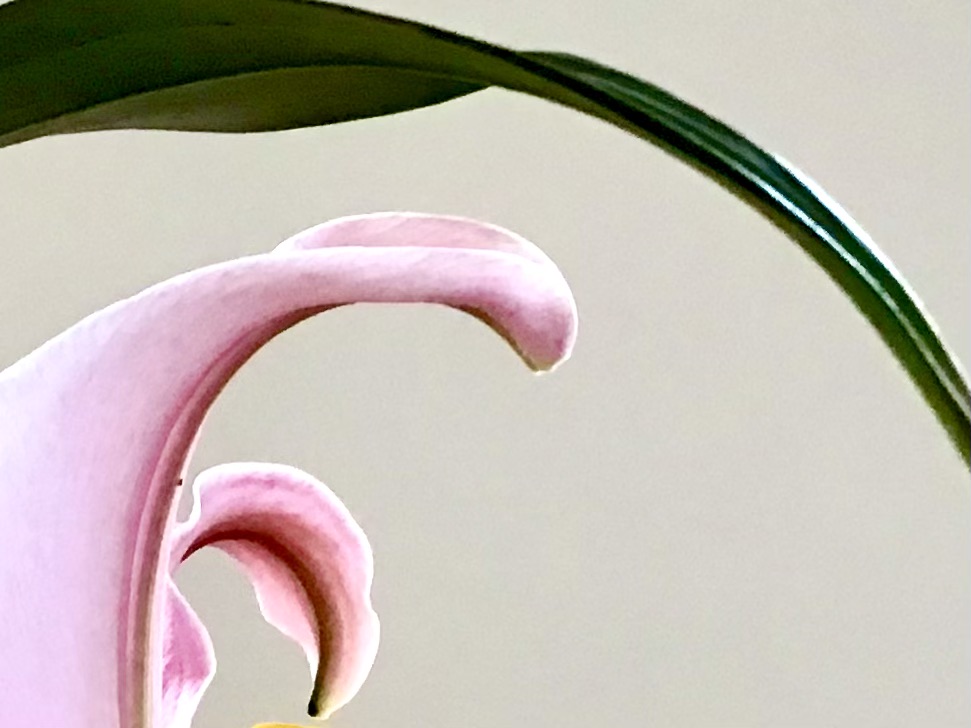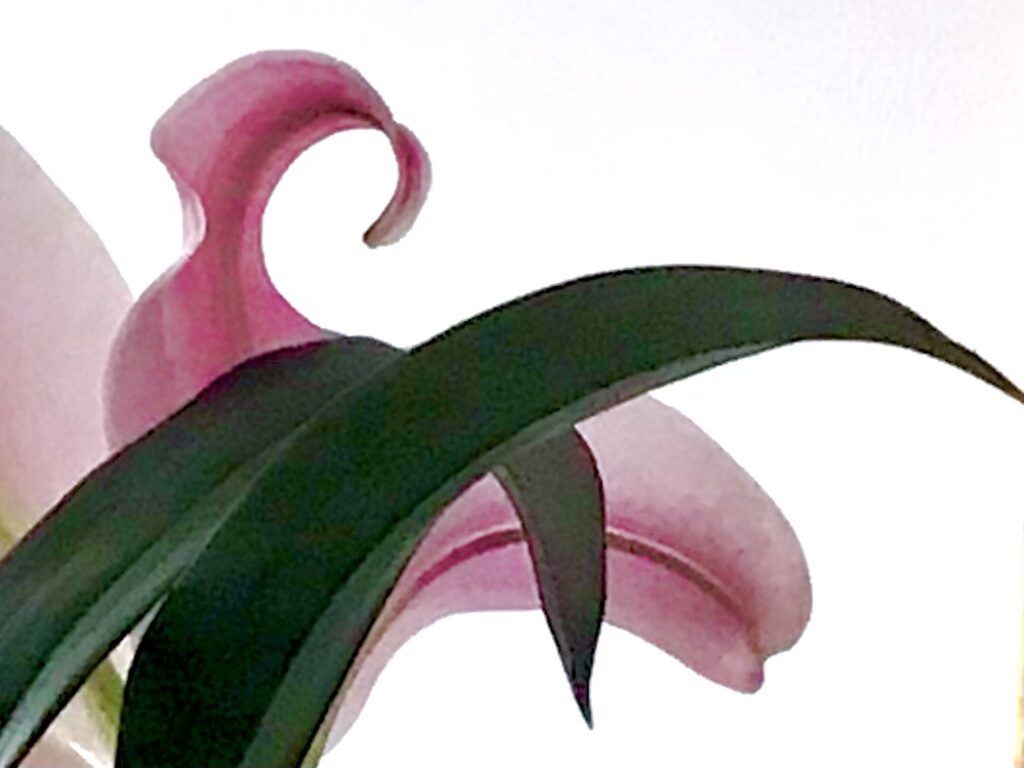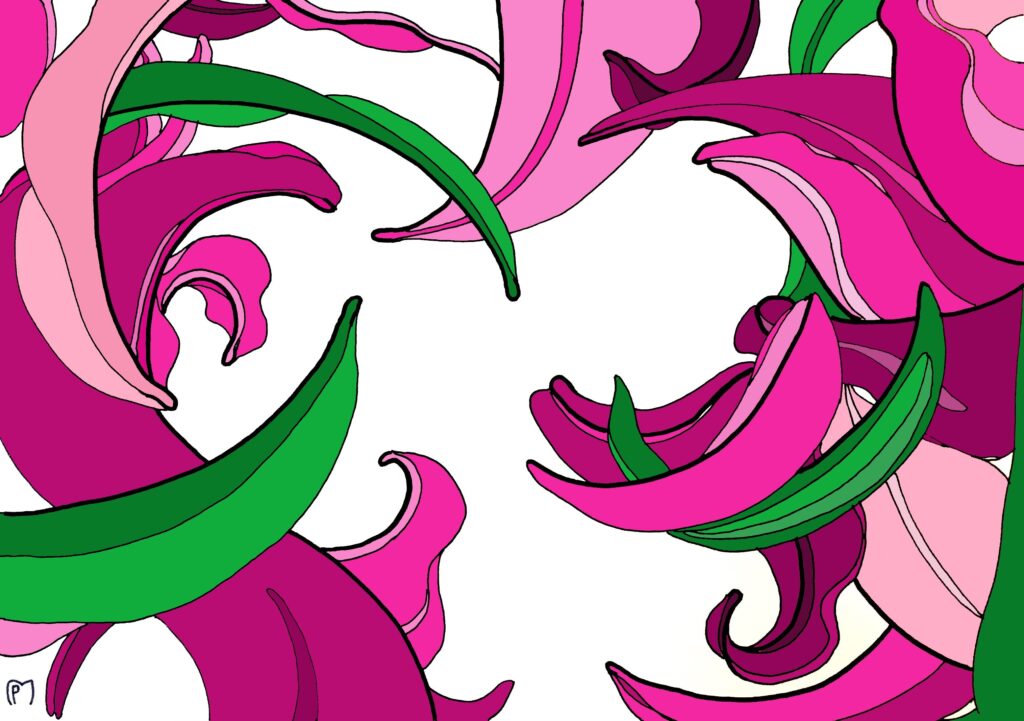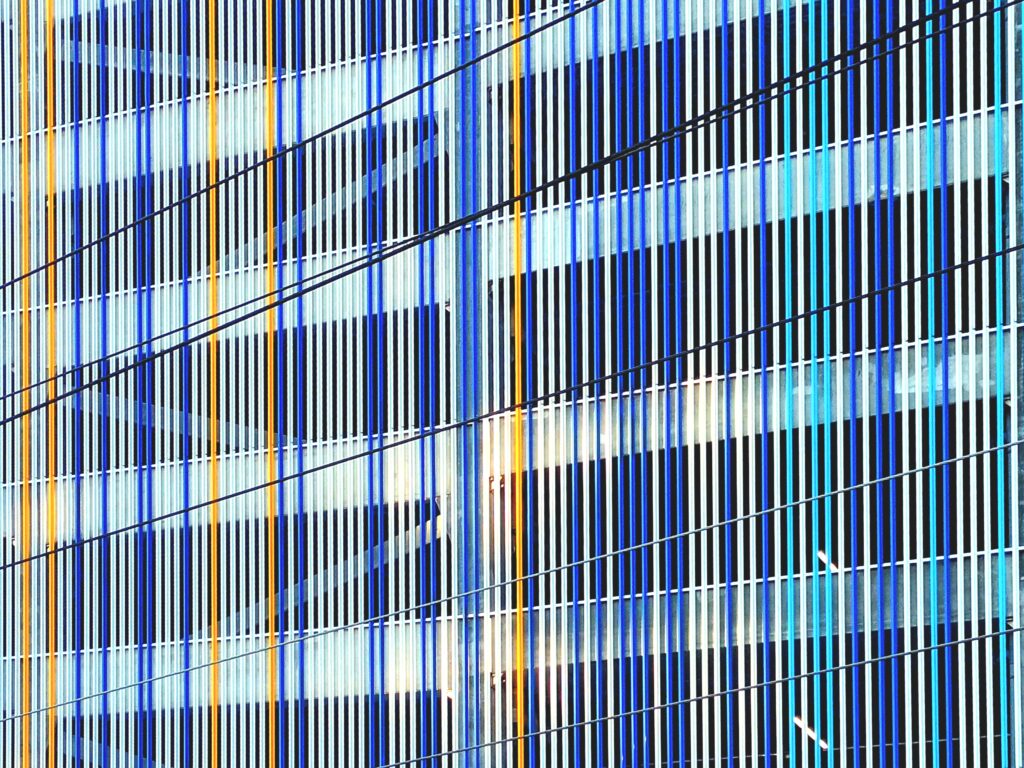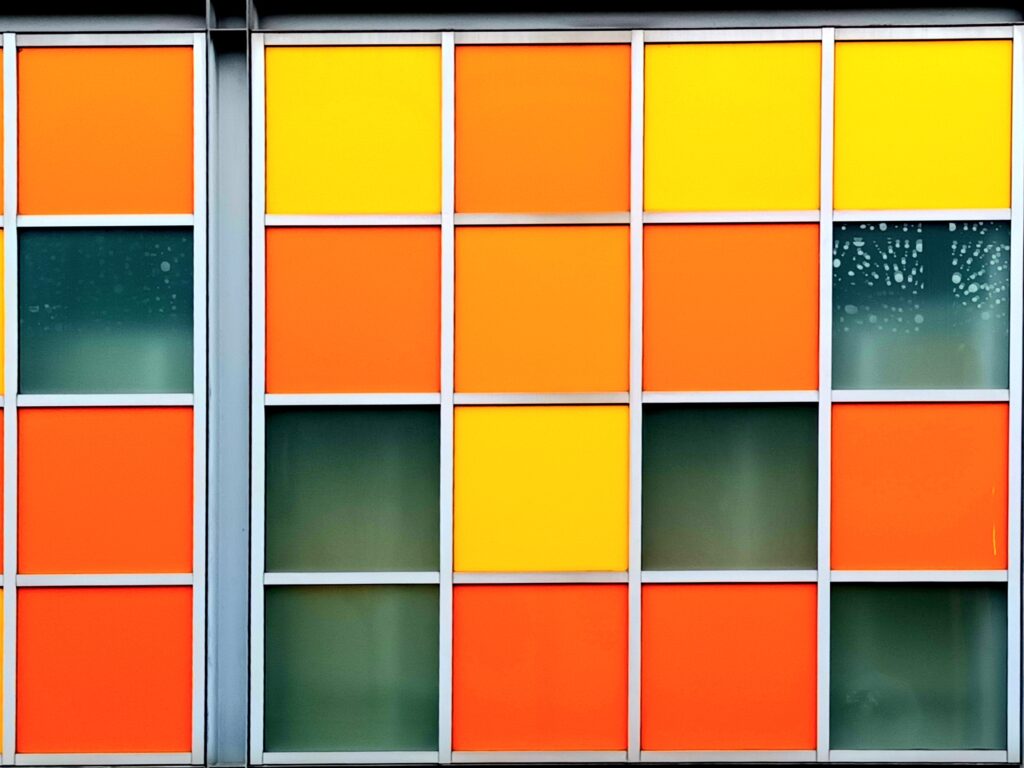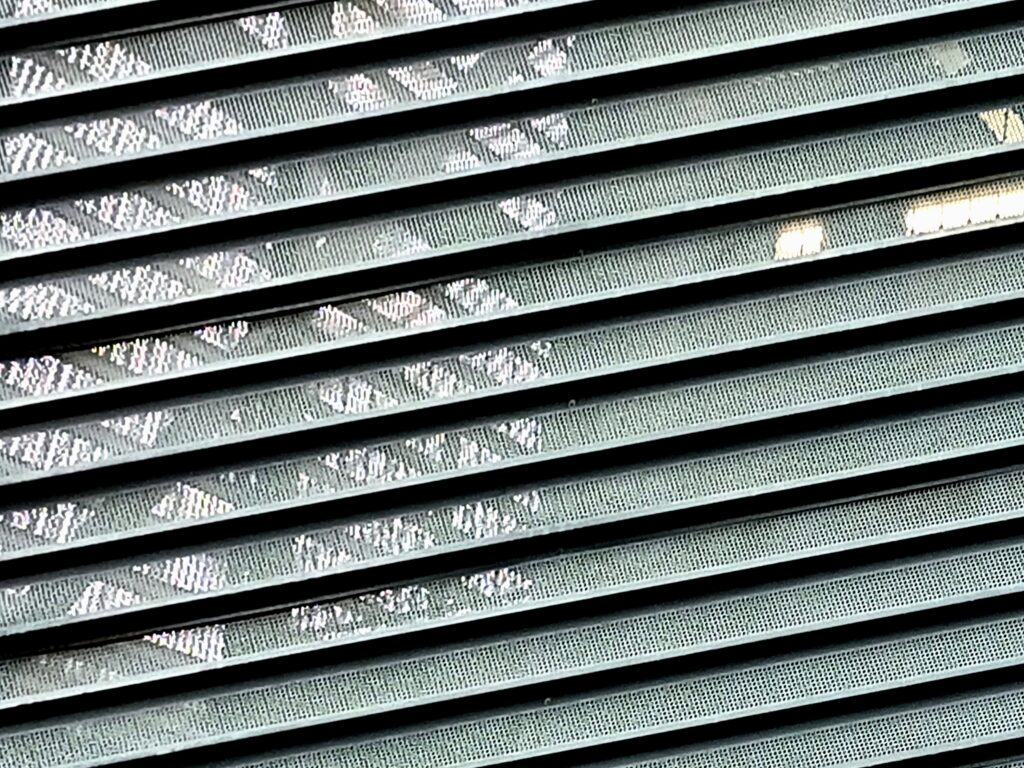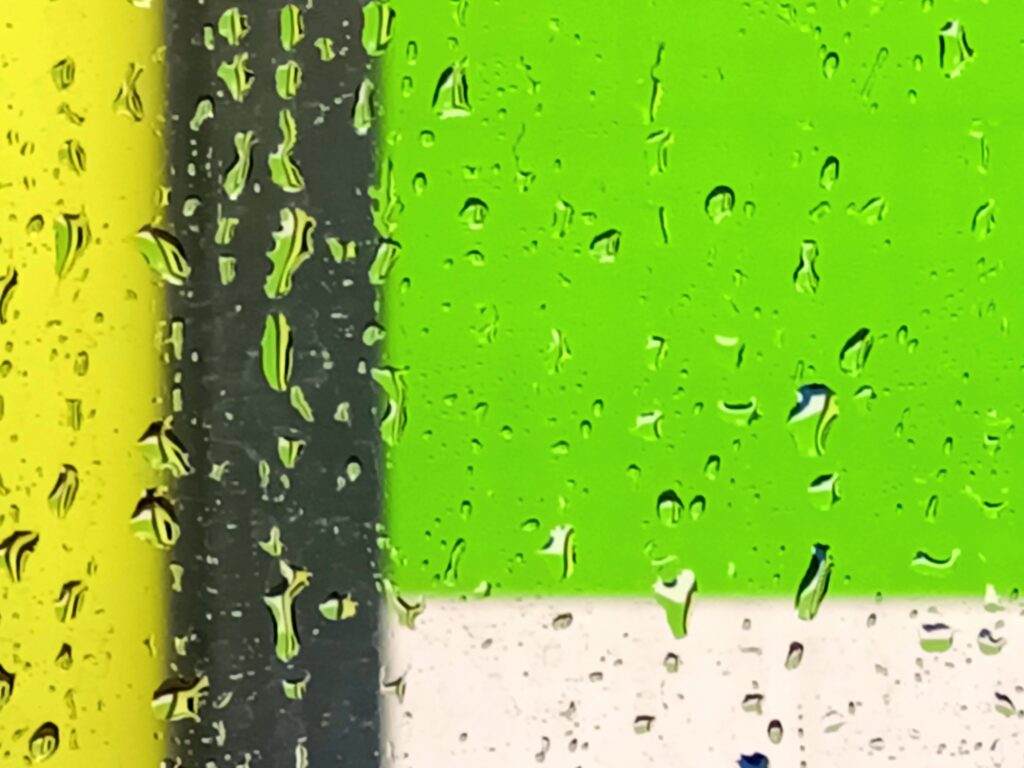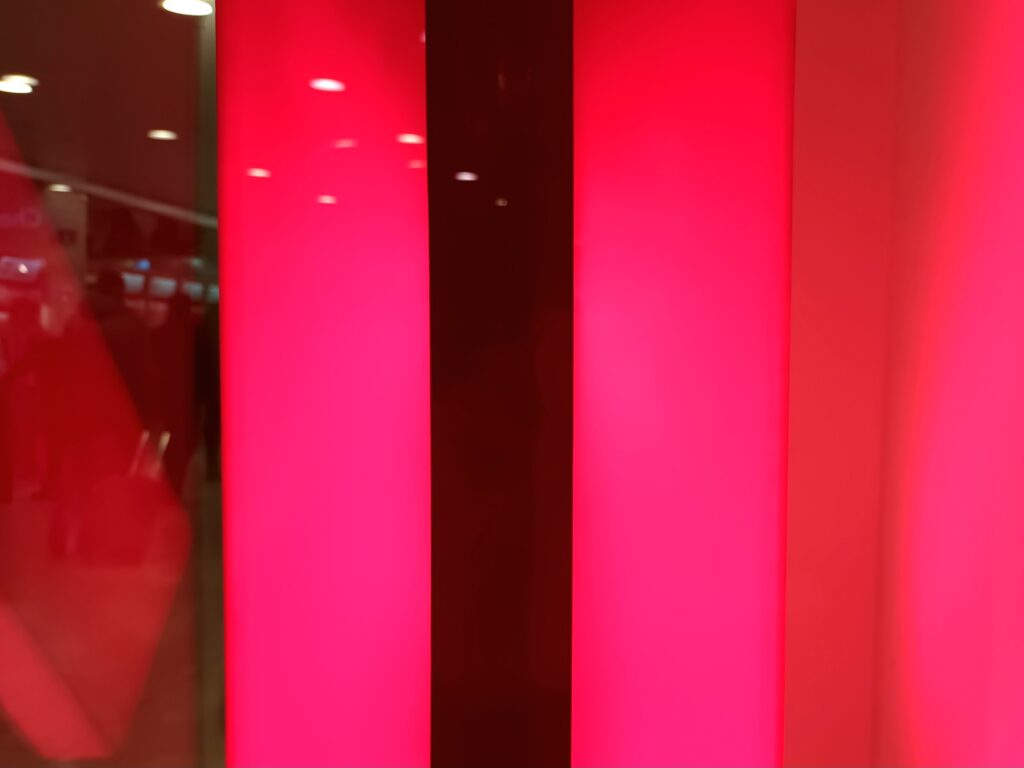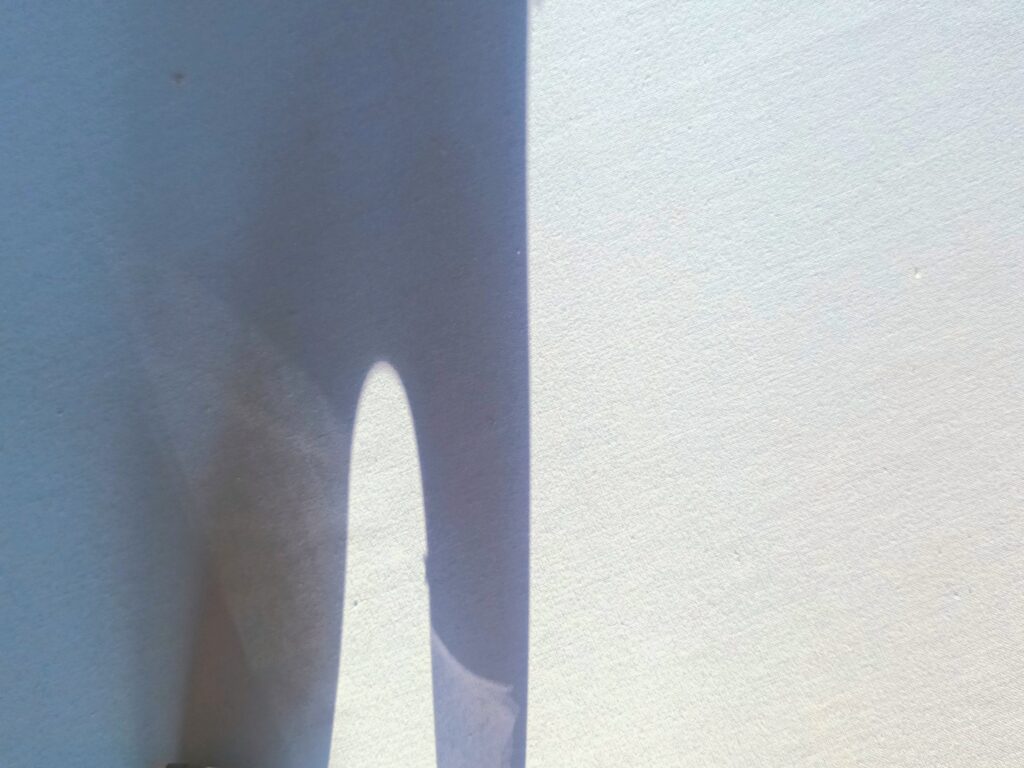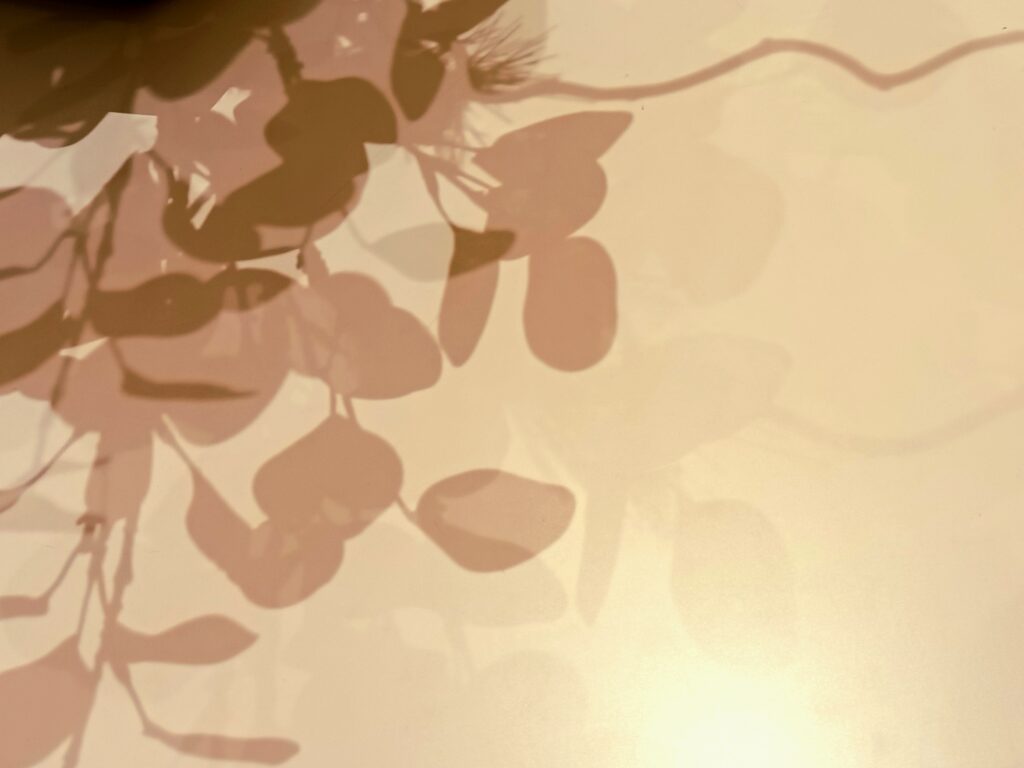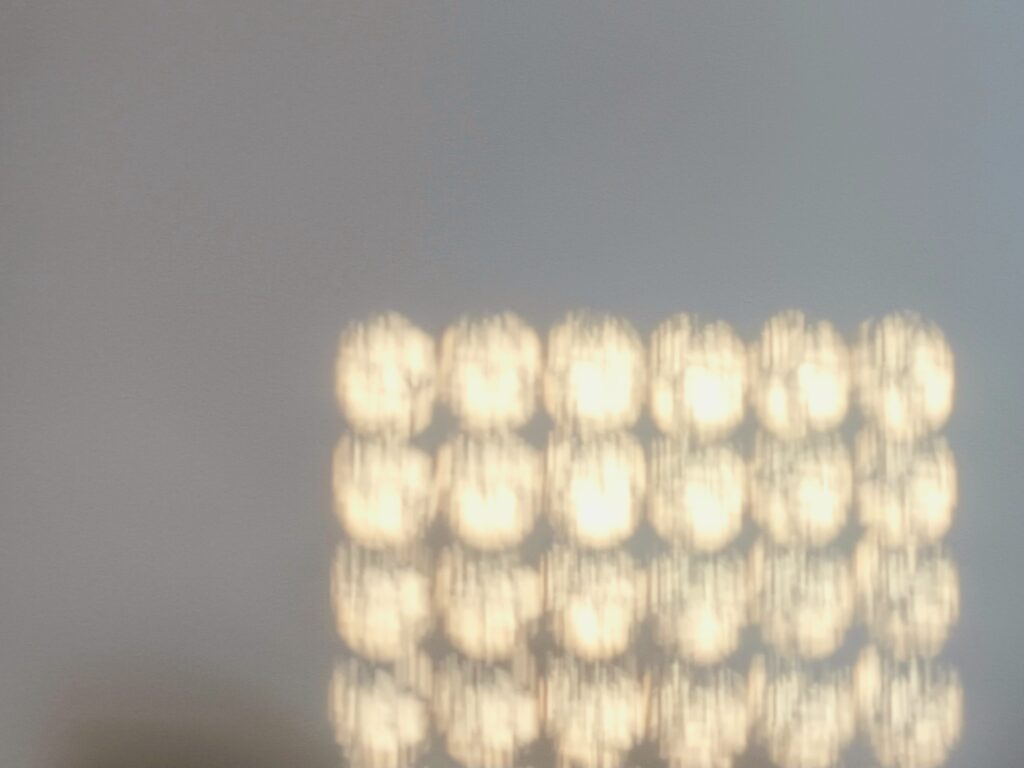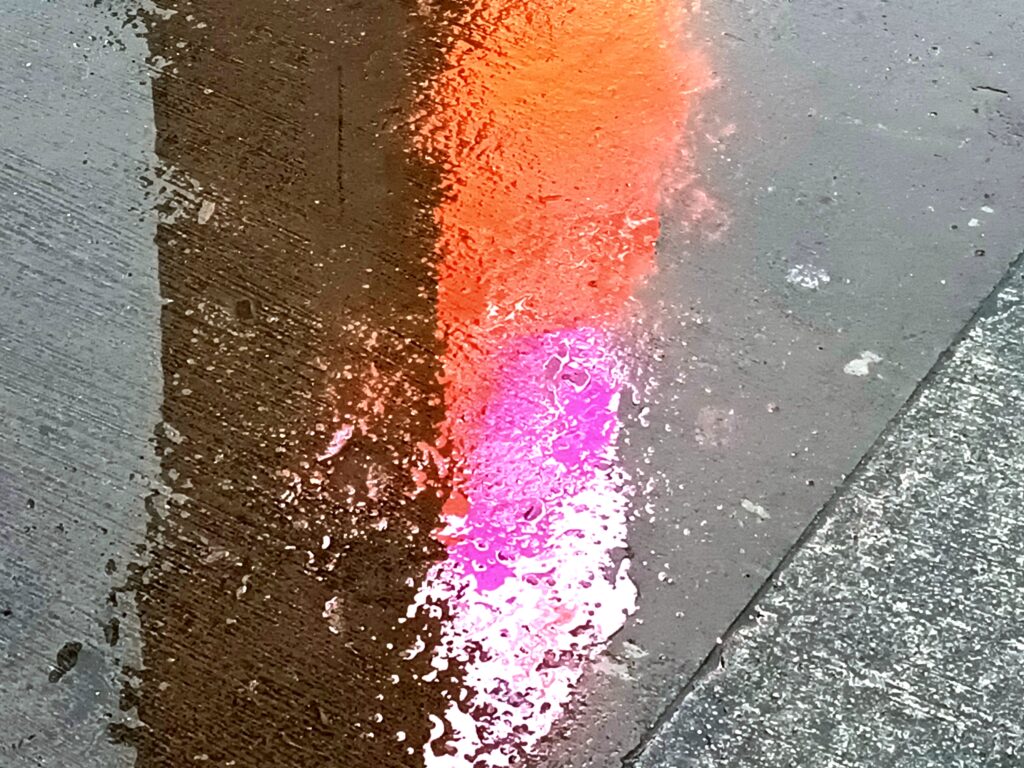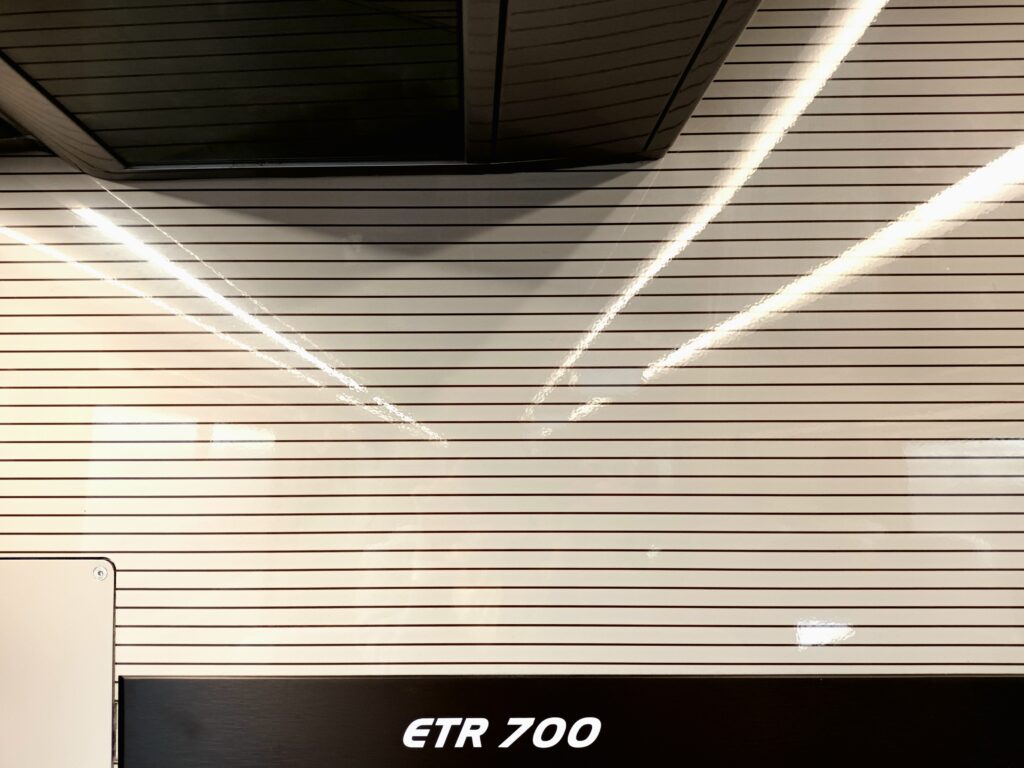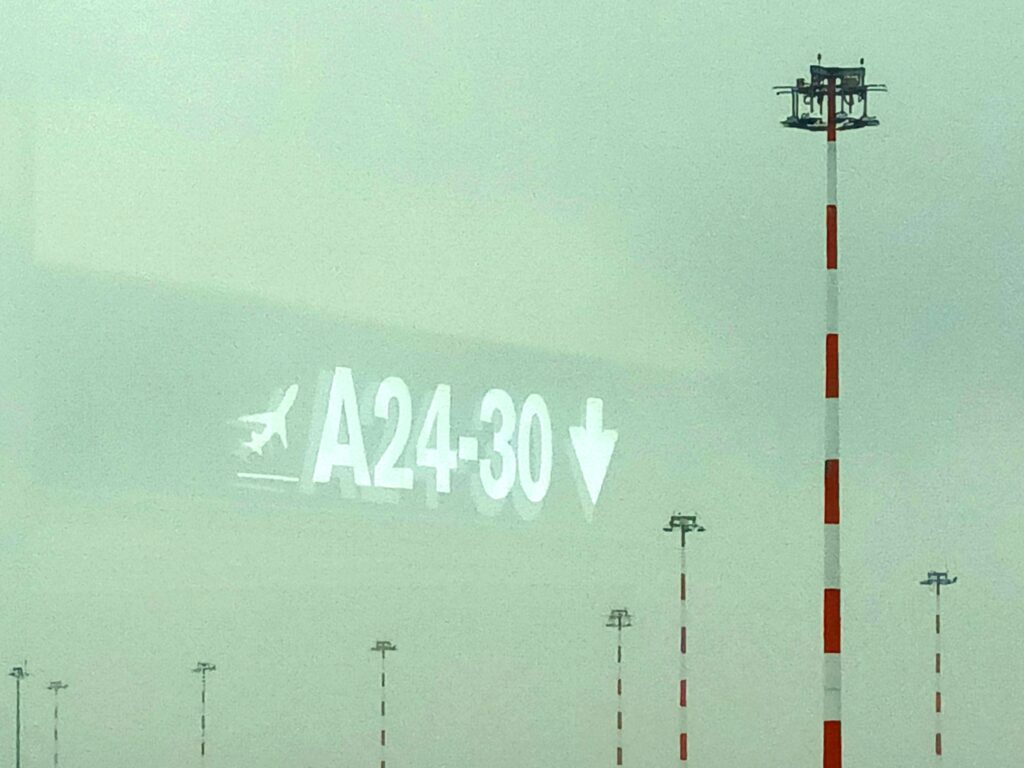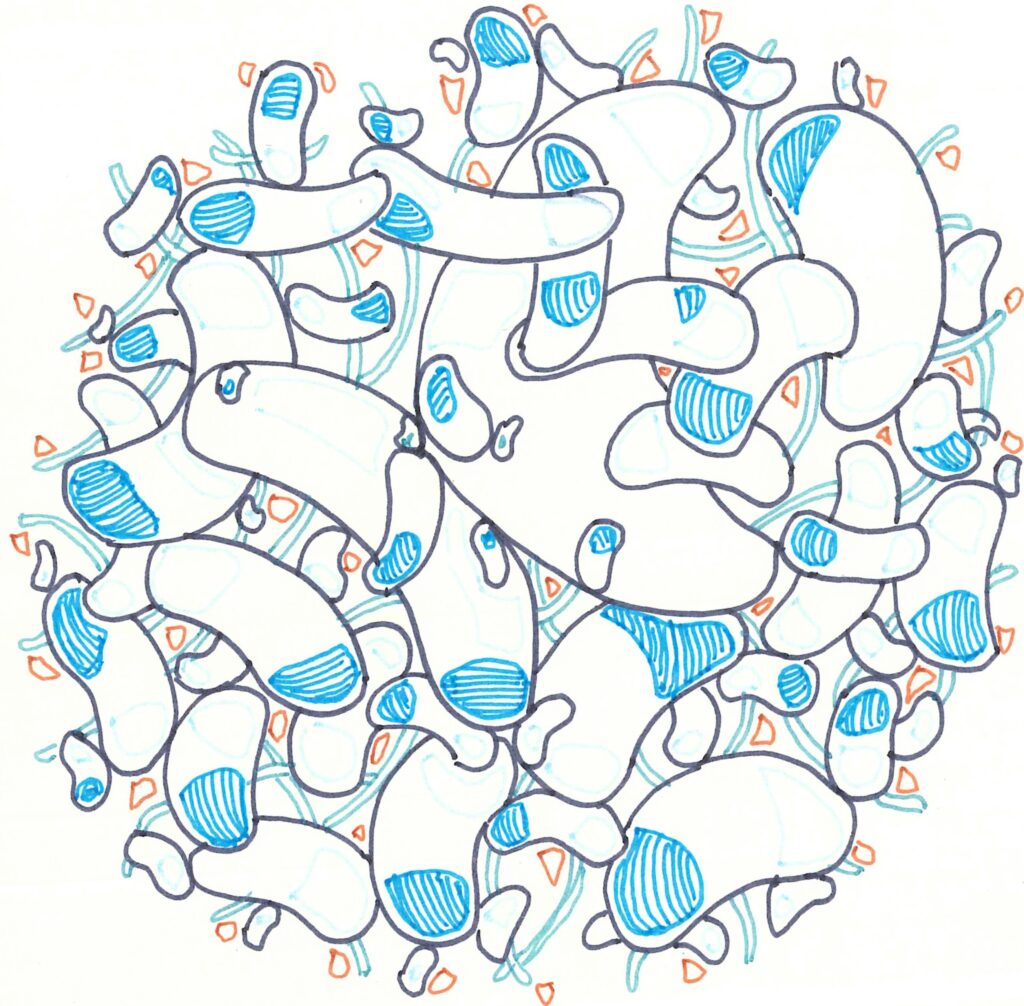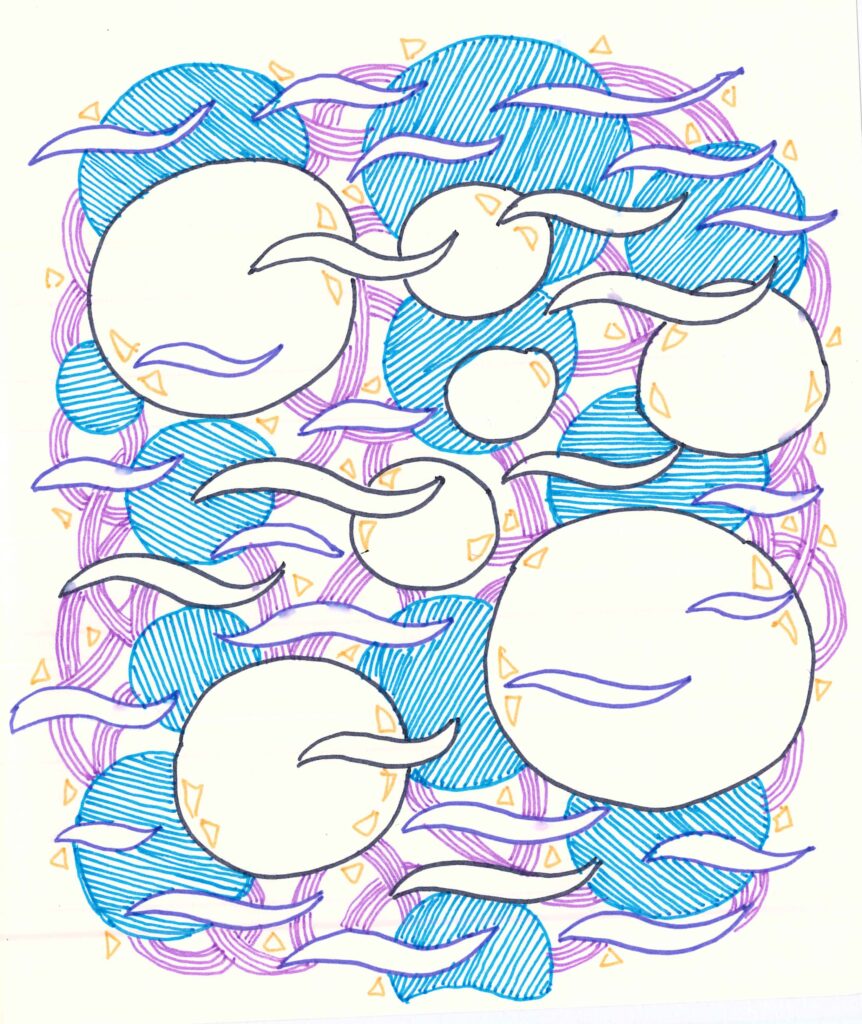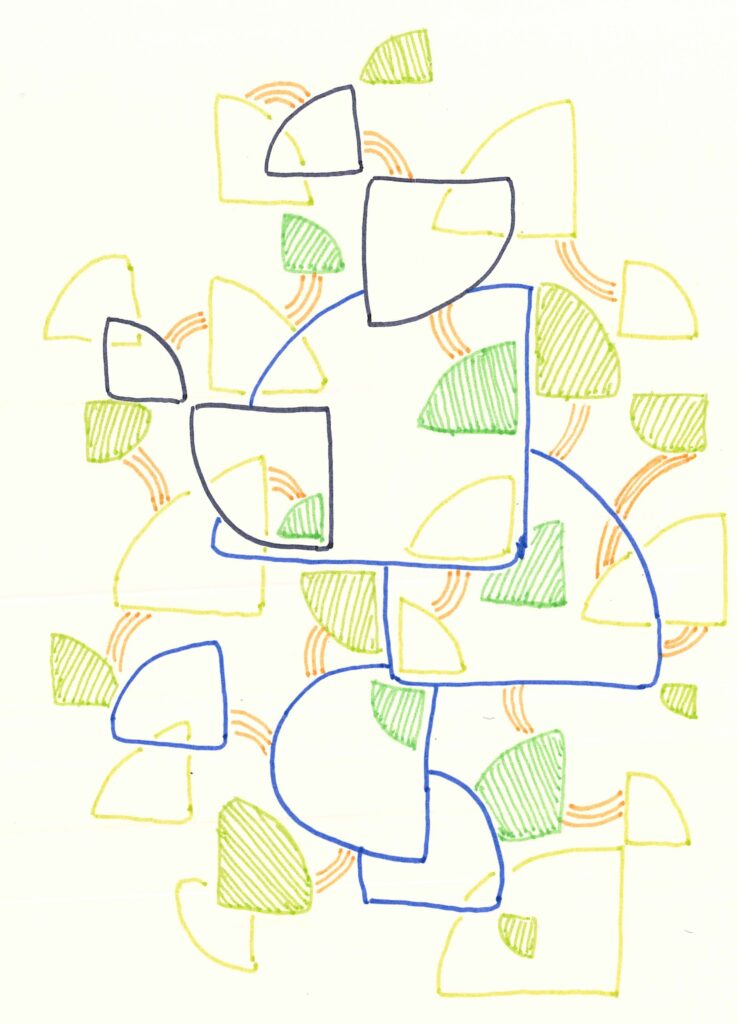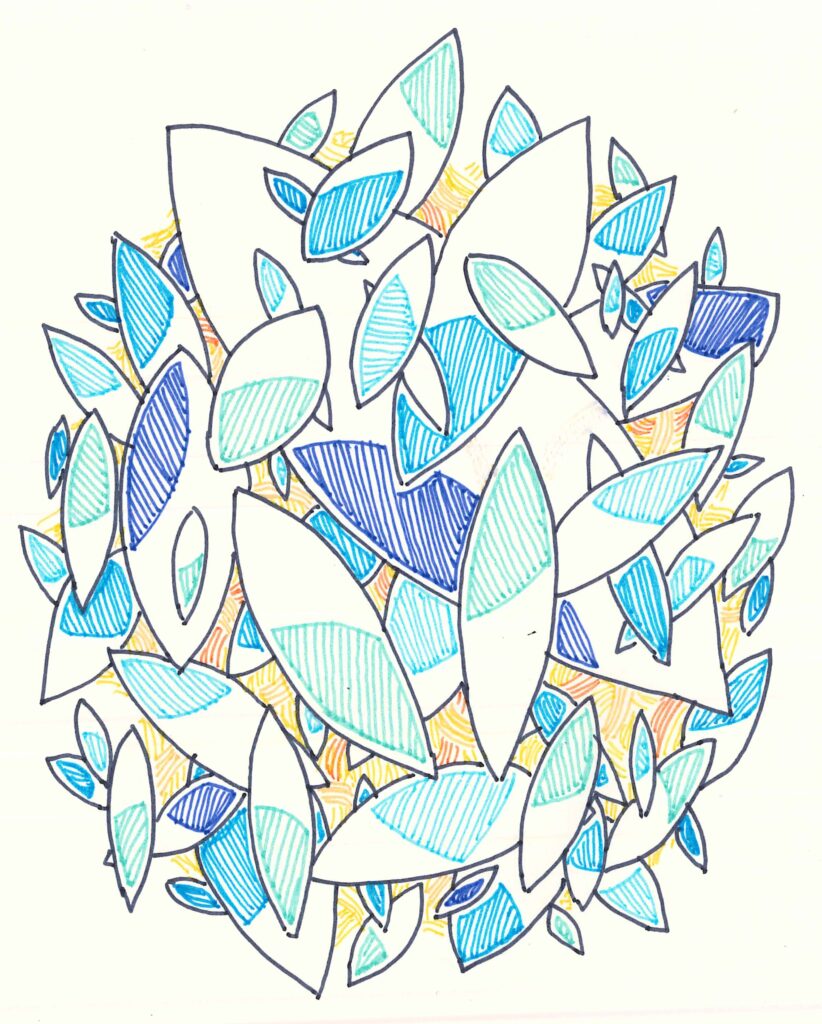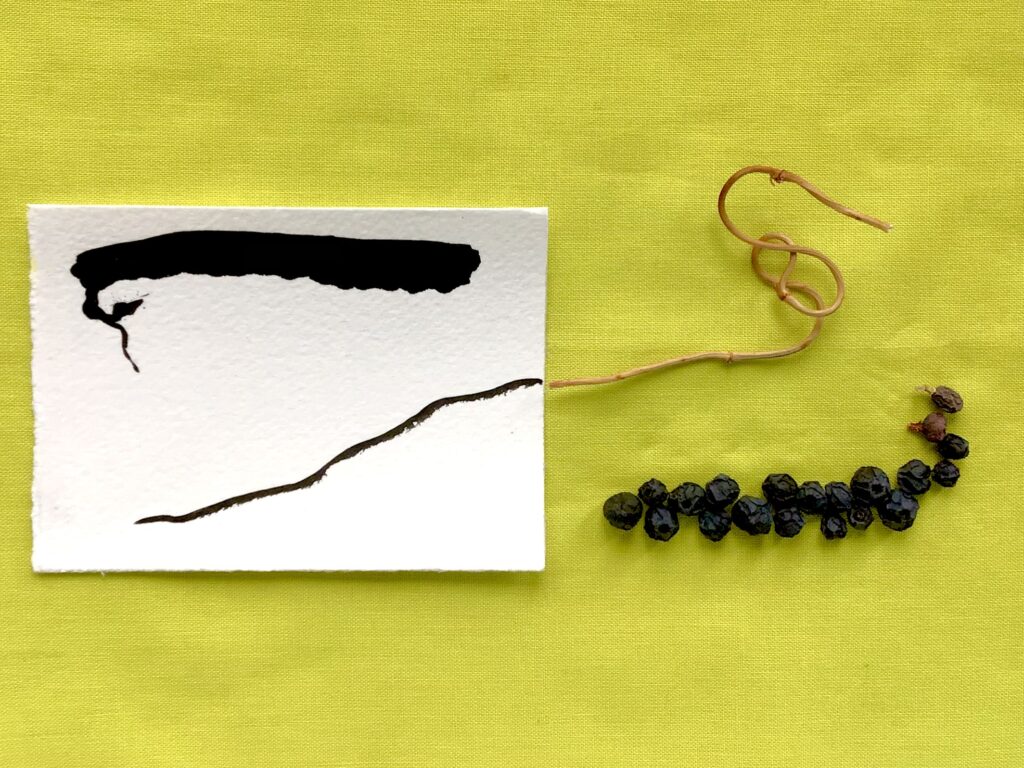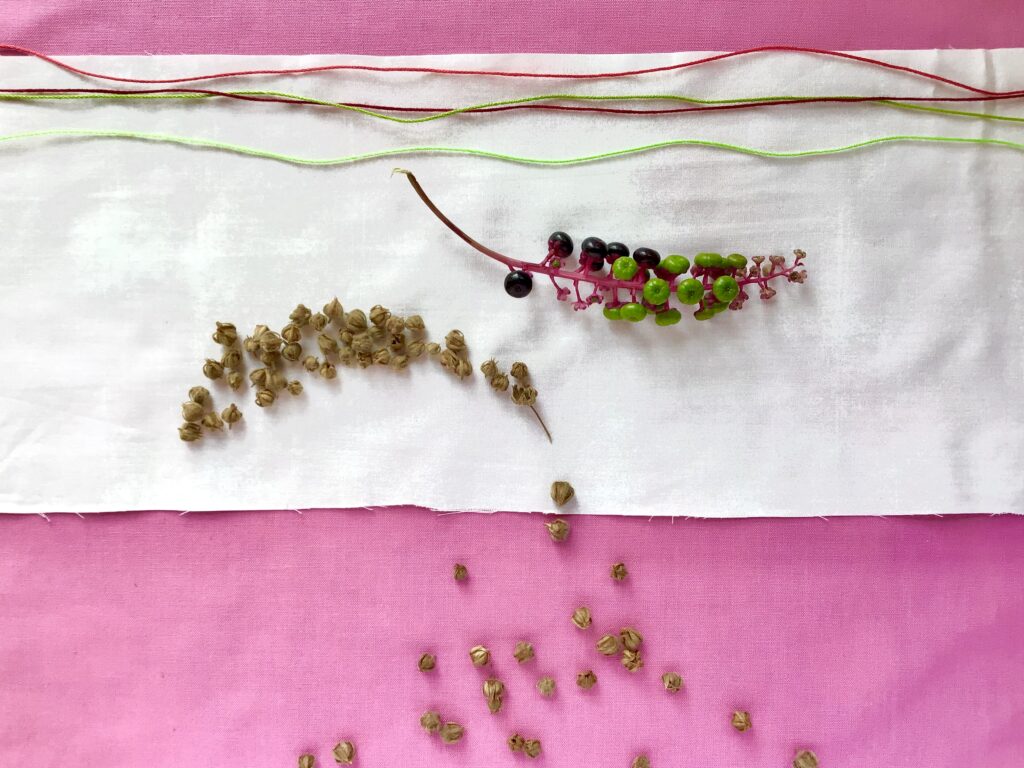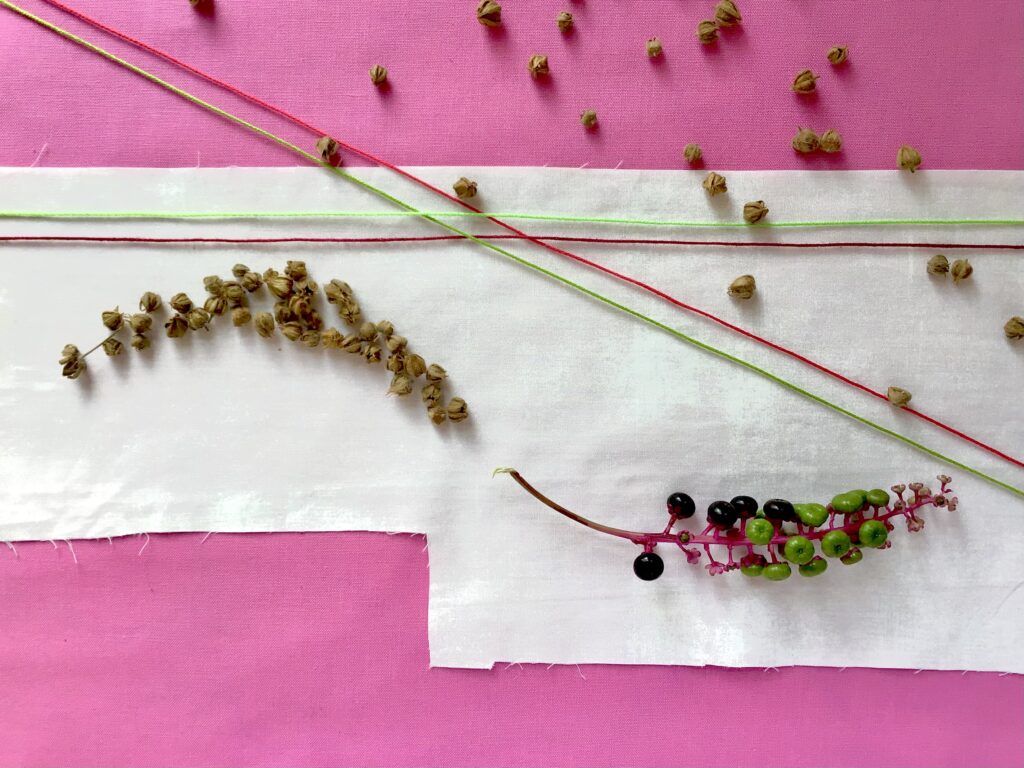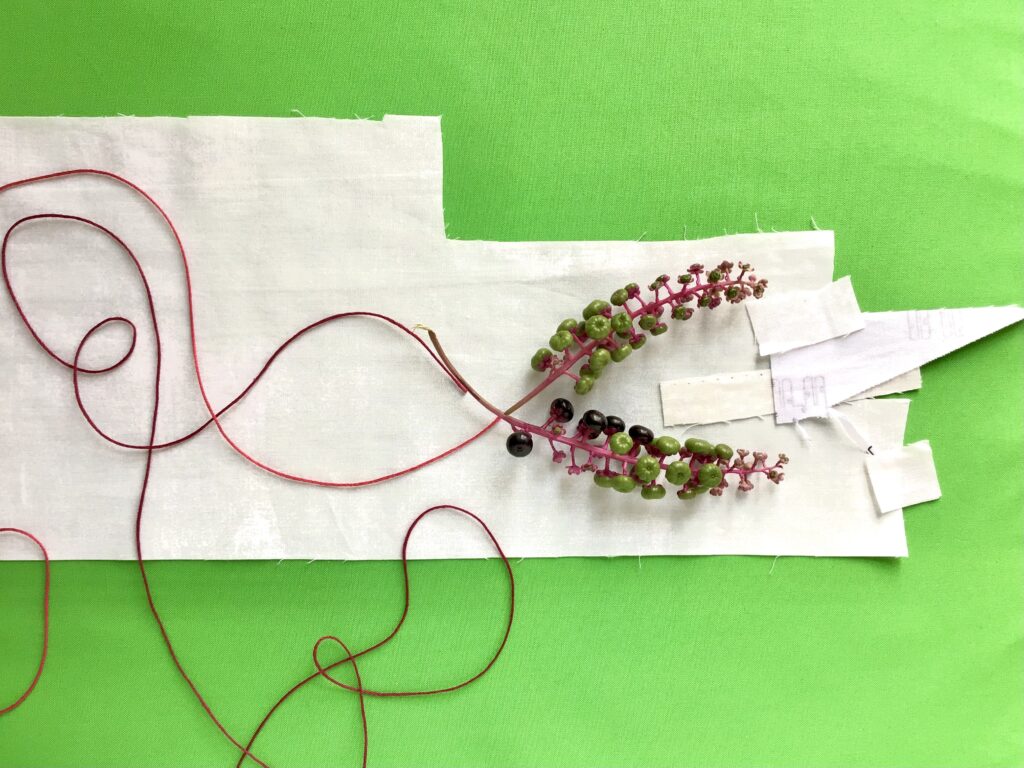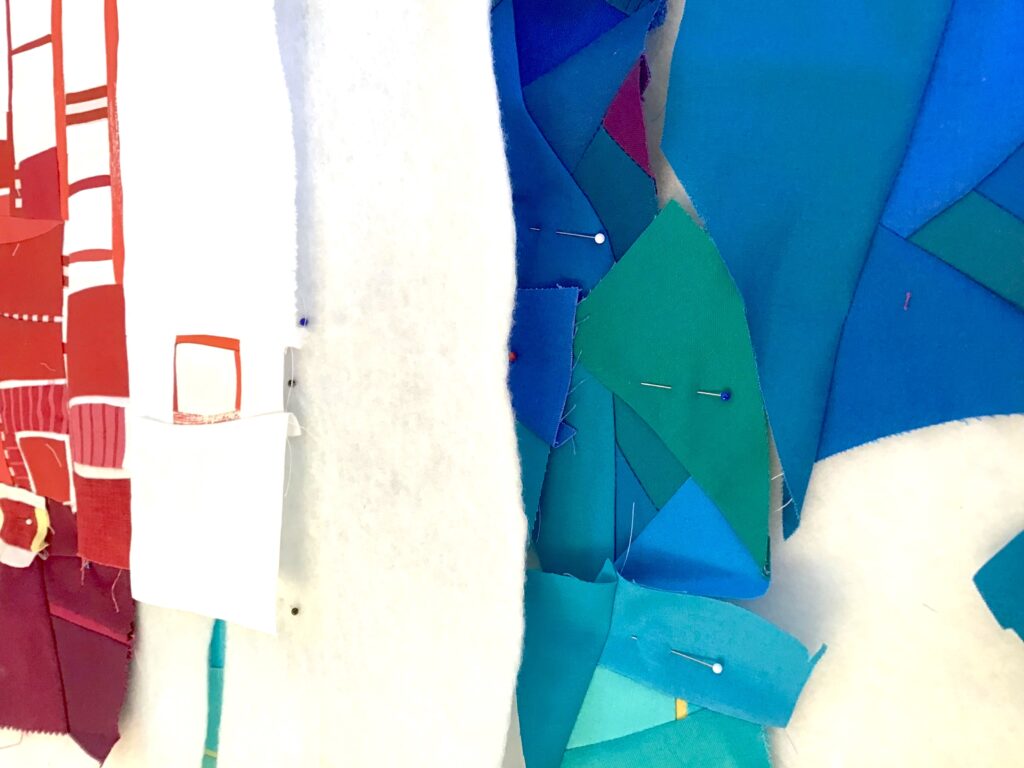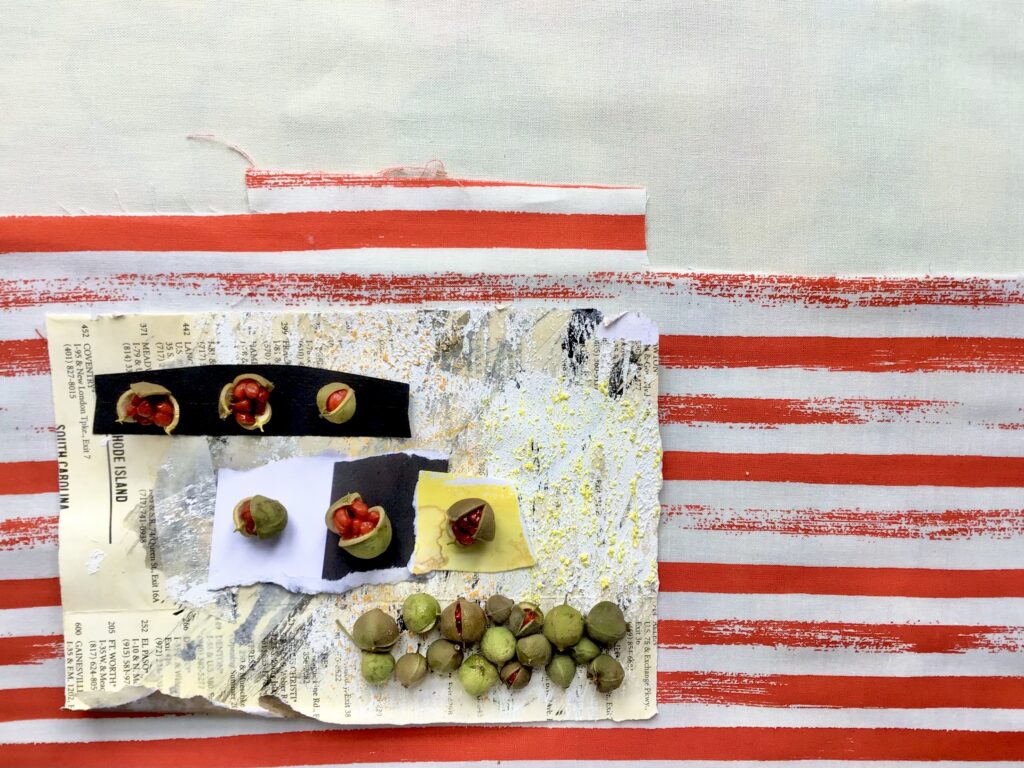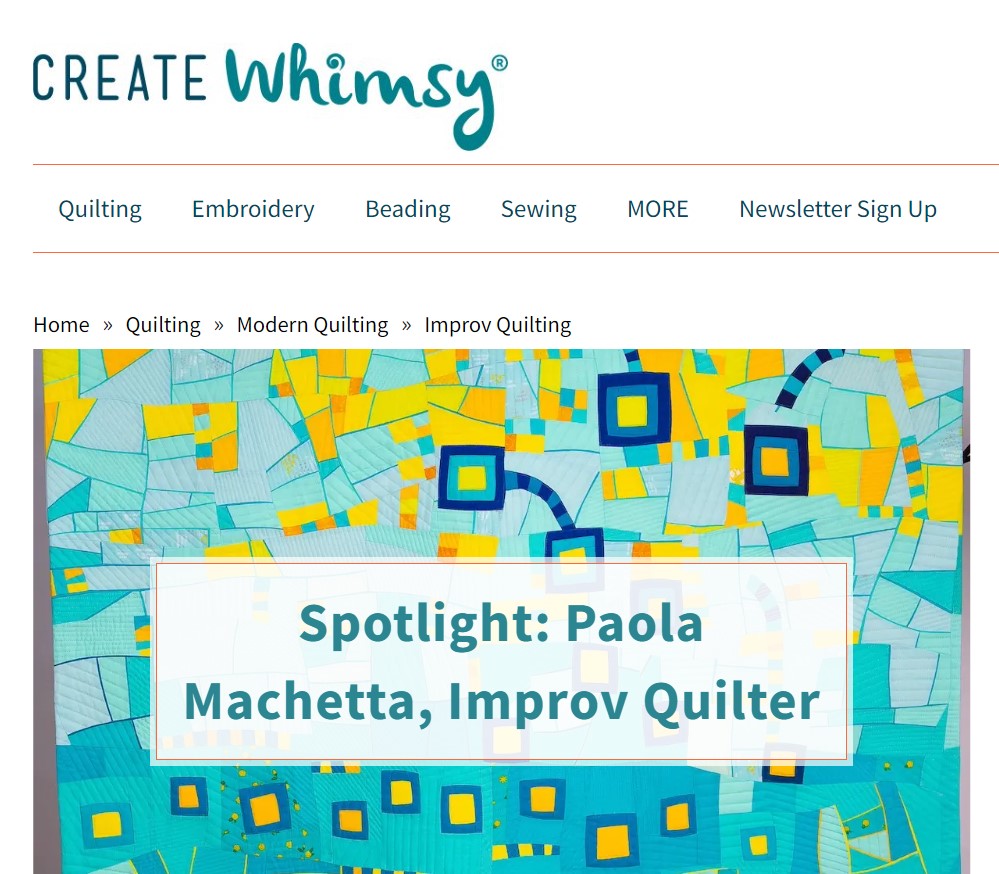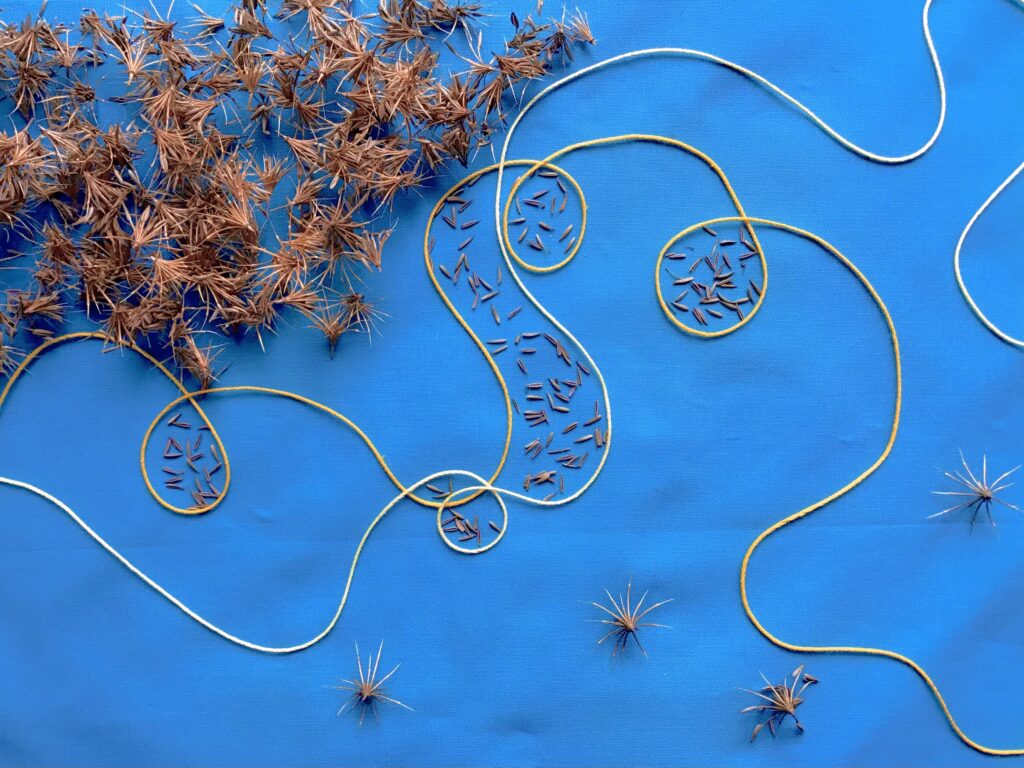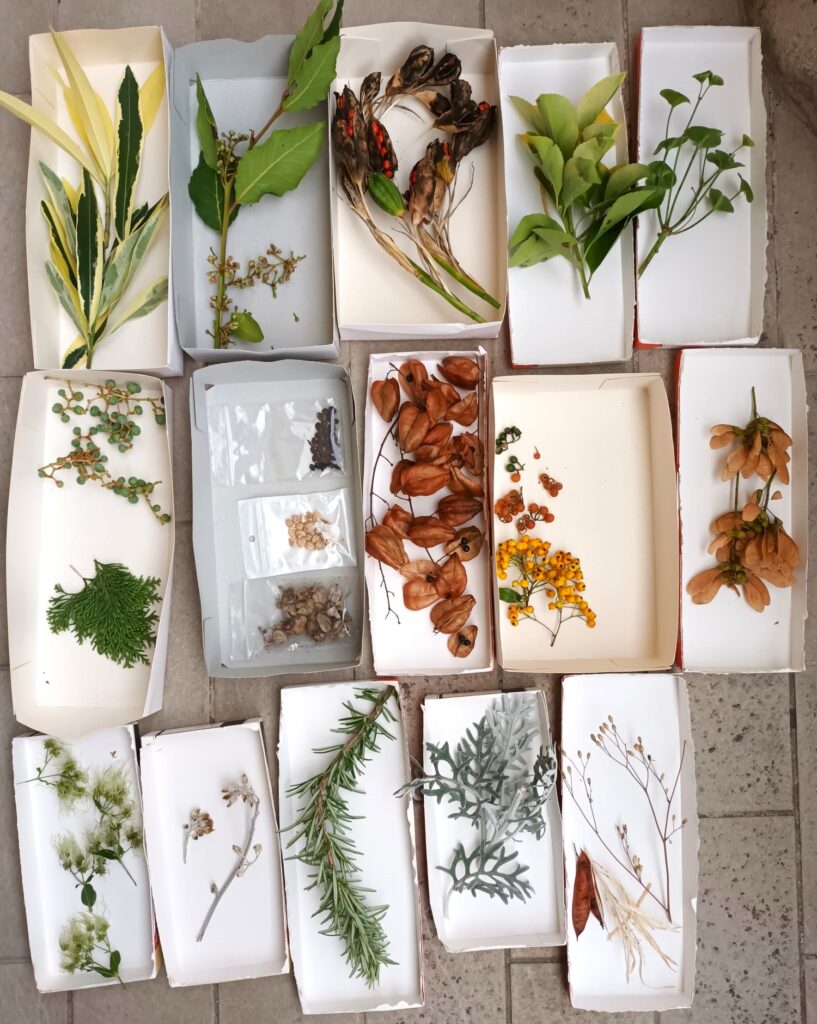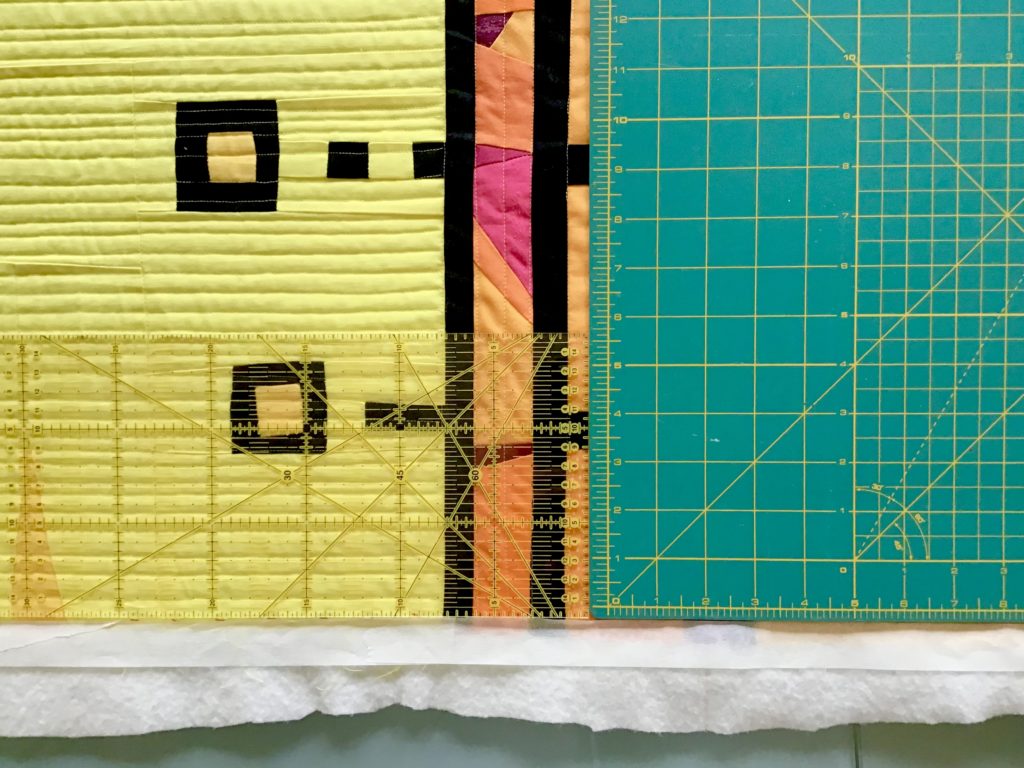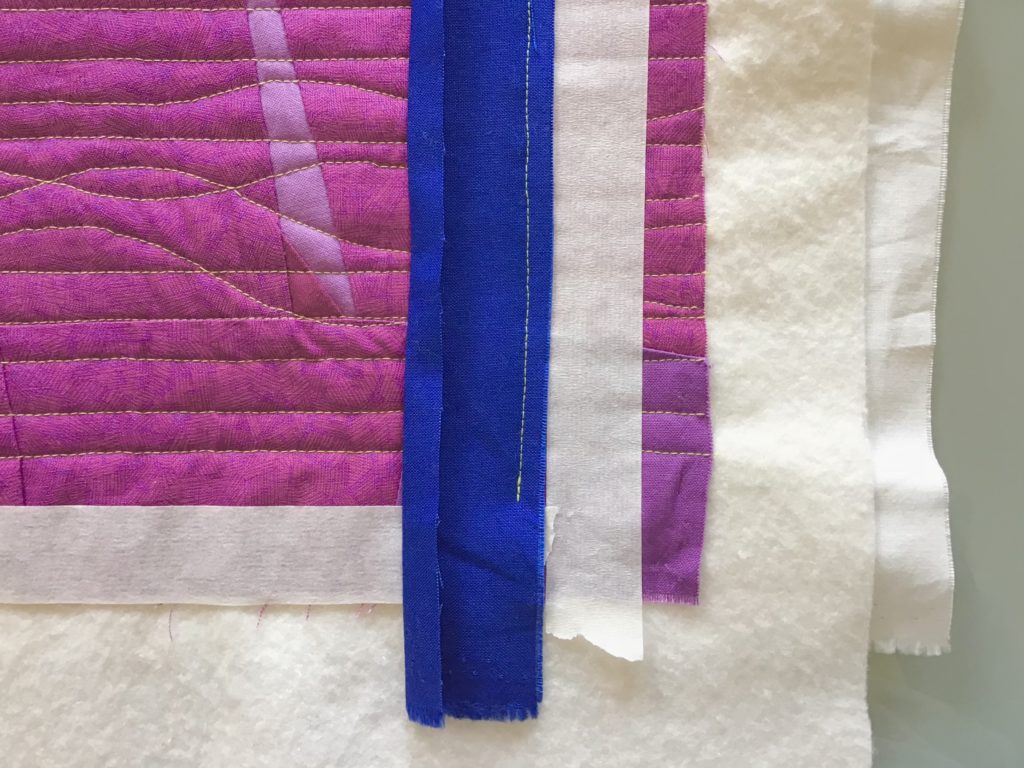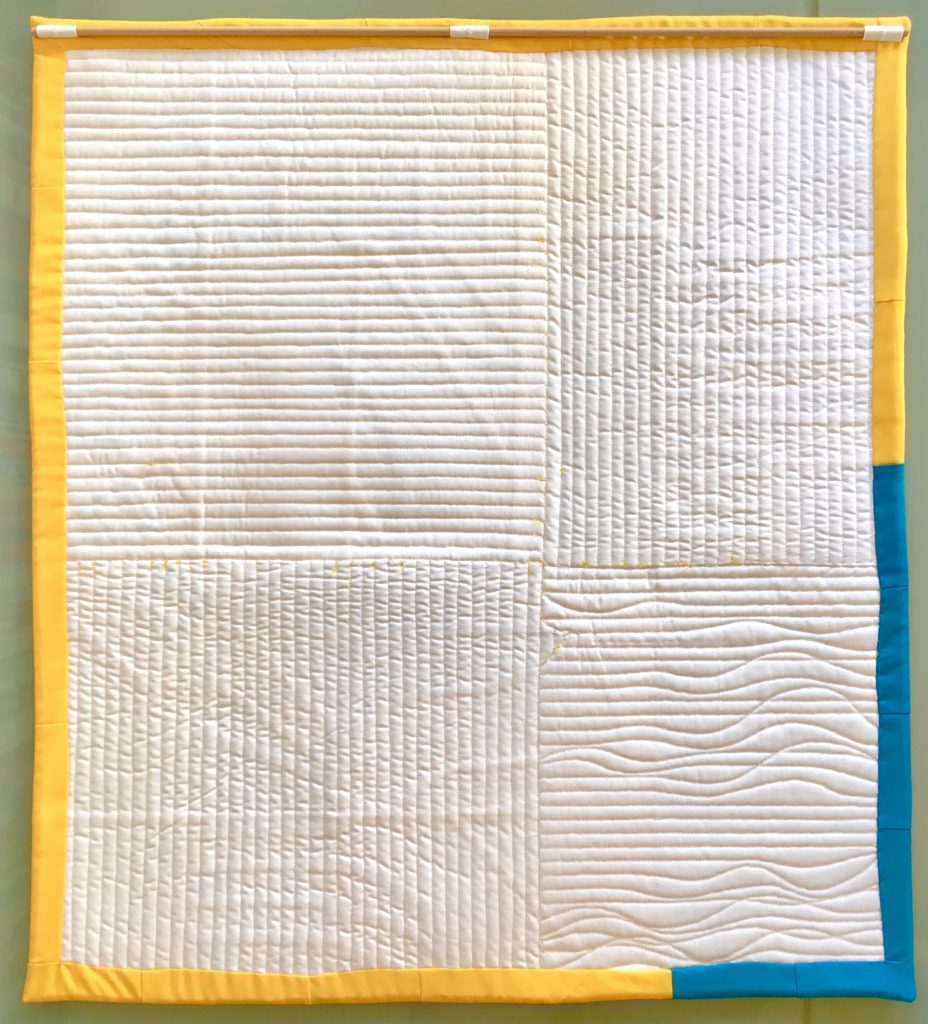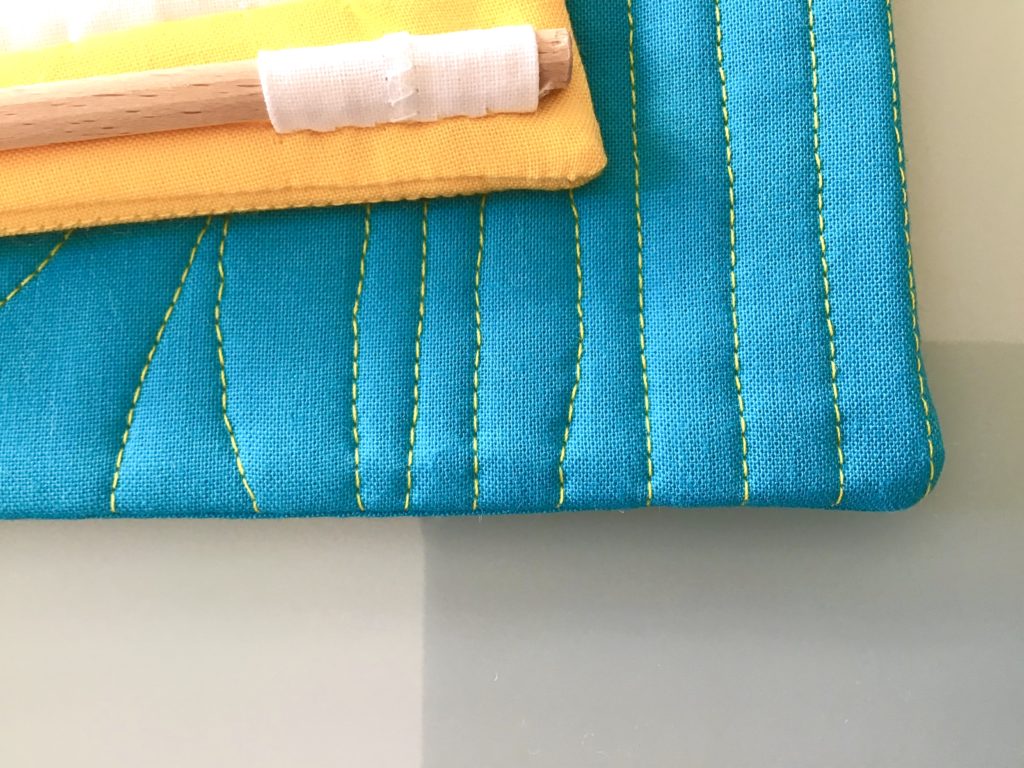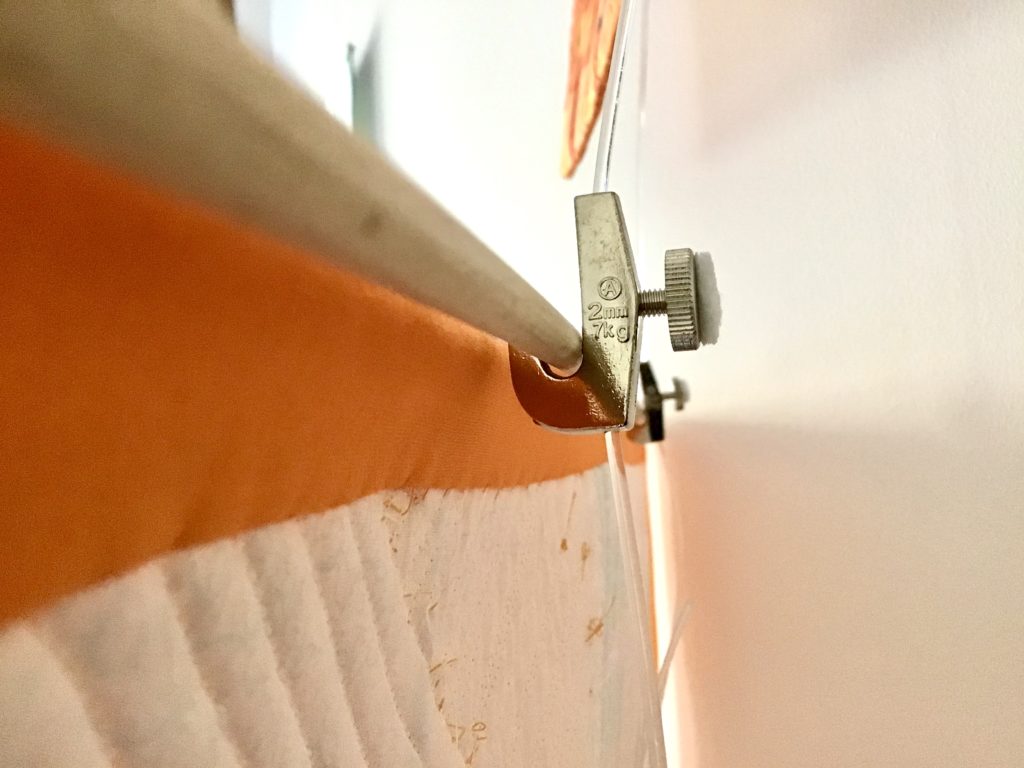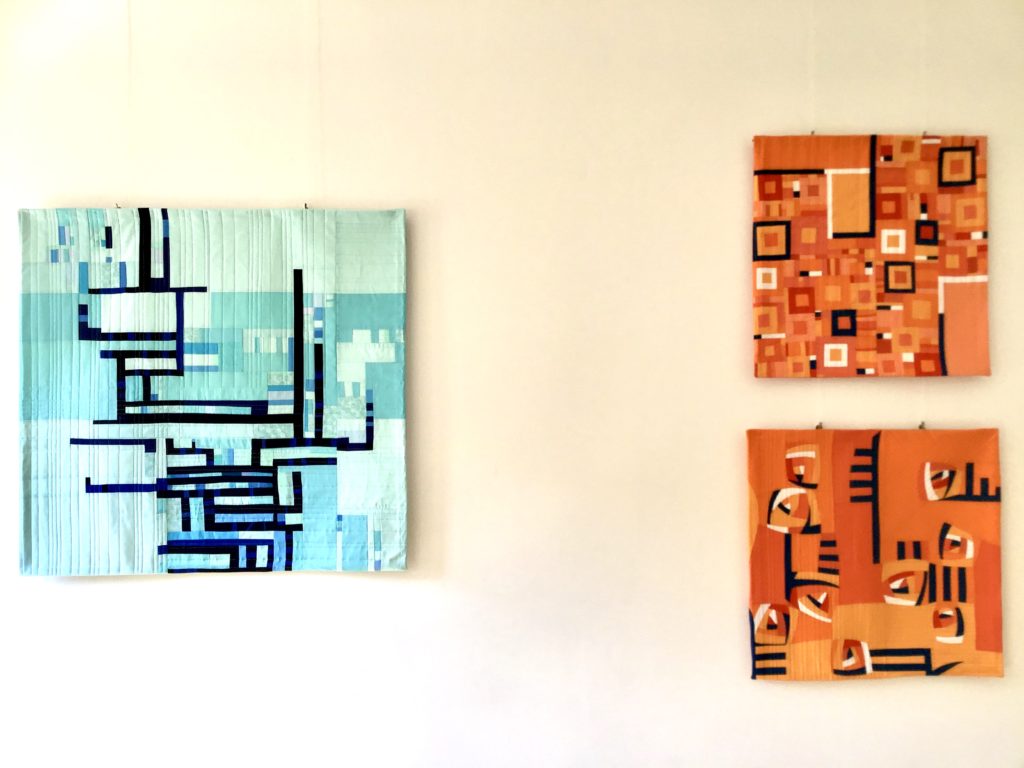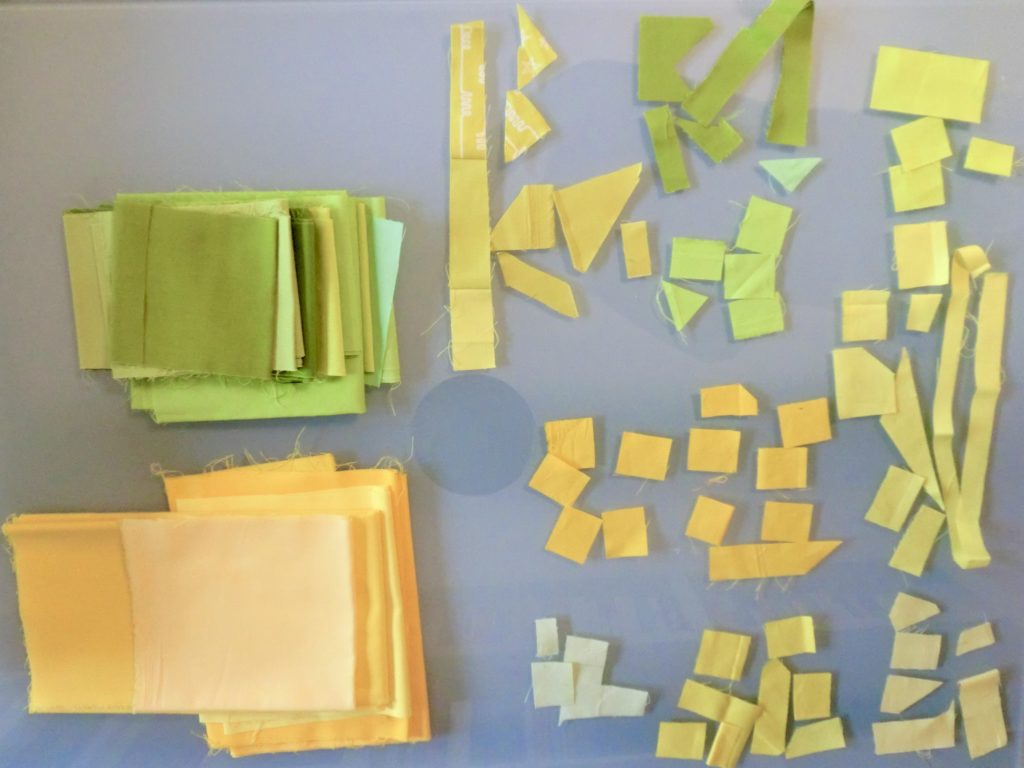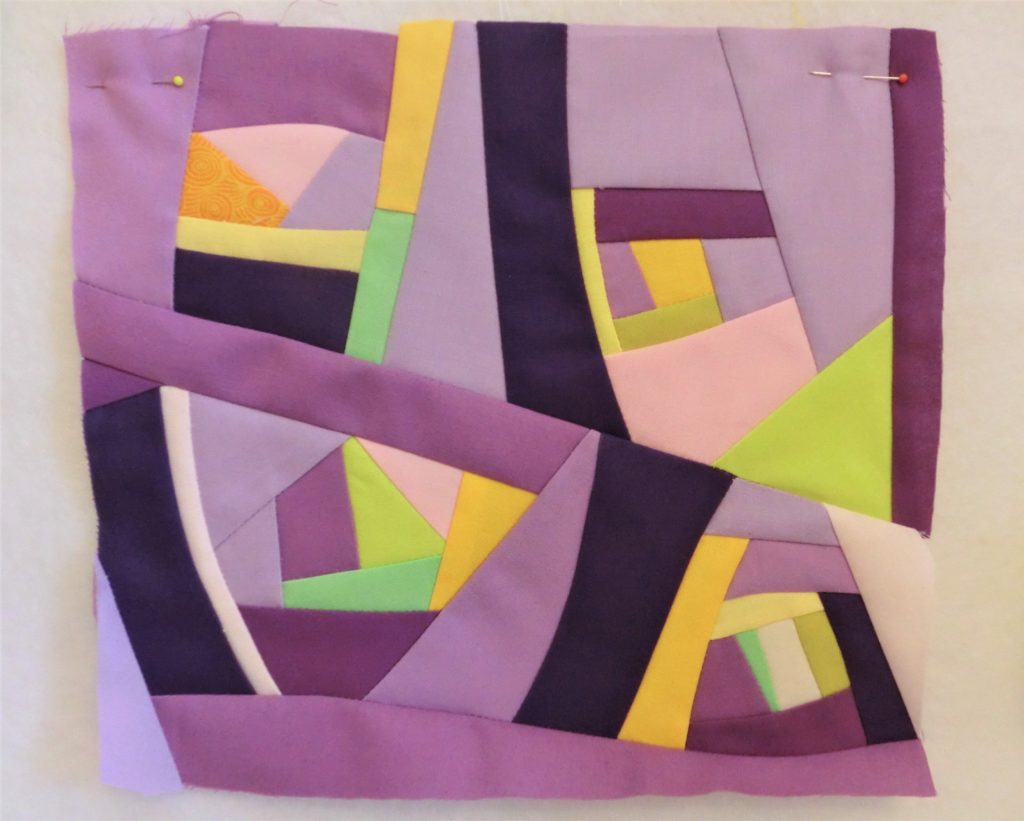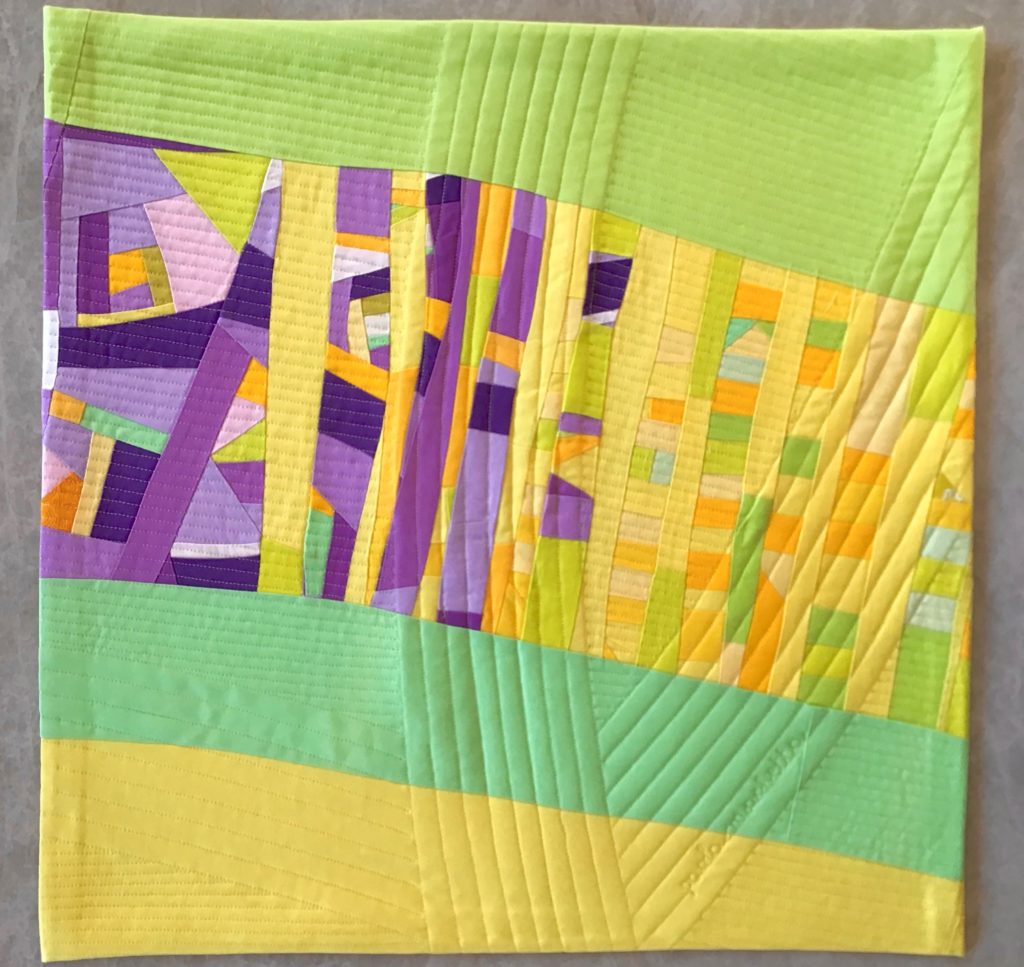Drawing is one of the three creative techniques I use (quilting, photography and drawing). They influence each other.
In drawing I have a few subset themes. One is botanical drawing.
Botanical drawing has a long history, and I cannot practice it without referring to its ancient practice.
I visited three times the Botanical Garden of Padova, where historical botanical drawings are displayed in the museum. It is the most ancient university botanical garden of the world that preserves its original location. Founded in 1545, it’s part of the world UNESCO heritage, it hosts 6000 plants from 5 continents. A cradle of science and scientific exchanges.
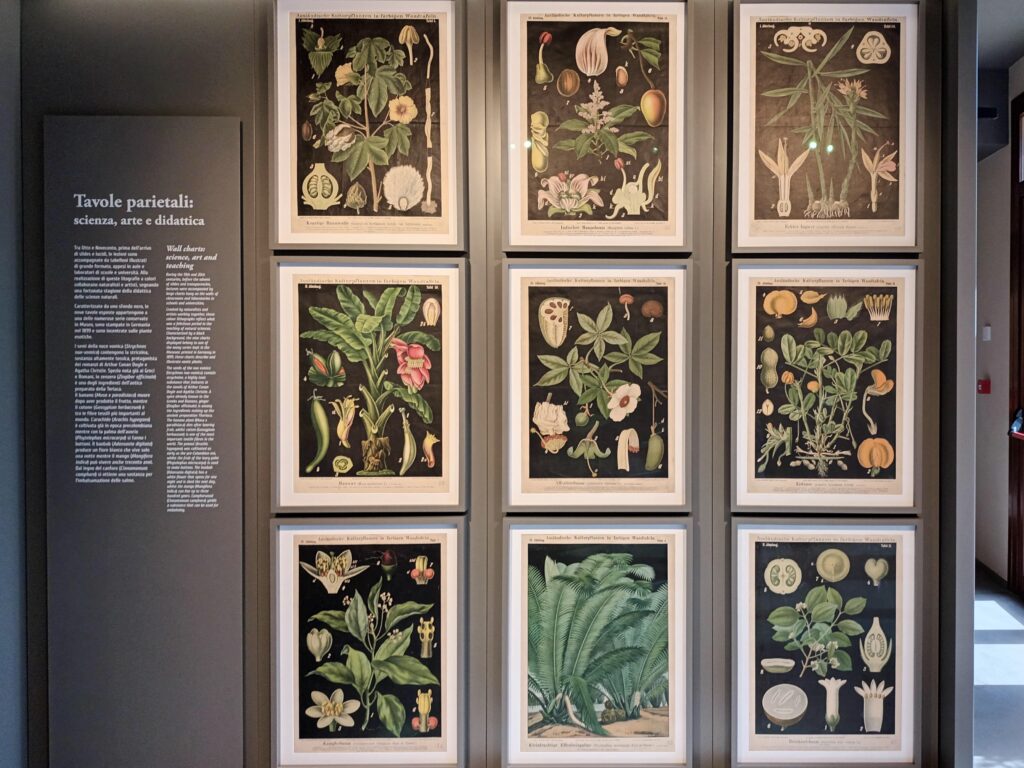
During my latest visit the Botanical Garden of Padova I collected photos of plants, for my future drawings.
I made, in the past months, this collection of small botanical drawings, where I practiced a bit with abstraction, always starting from some photograph of mine. I’ve been abstracting, in particular, the shape, underlining the contours and subtracting colours. The infinite curves created by biology have always fascinated me. I published these drawings in my recently created Instagram profile @the_cult_of_ink.
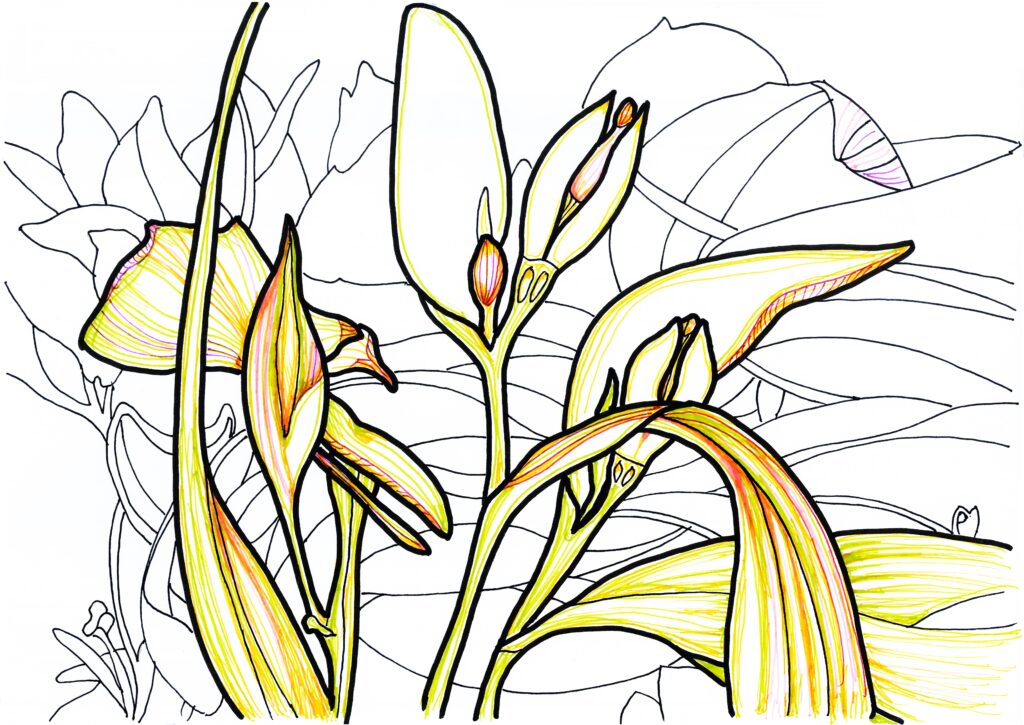
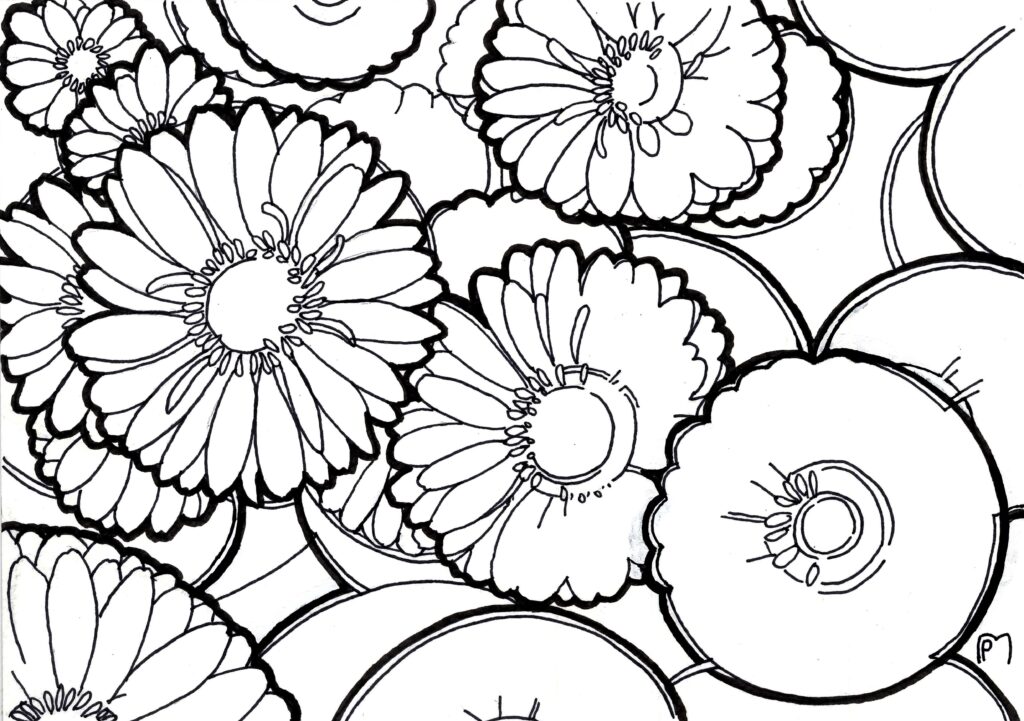
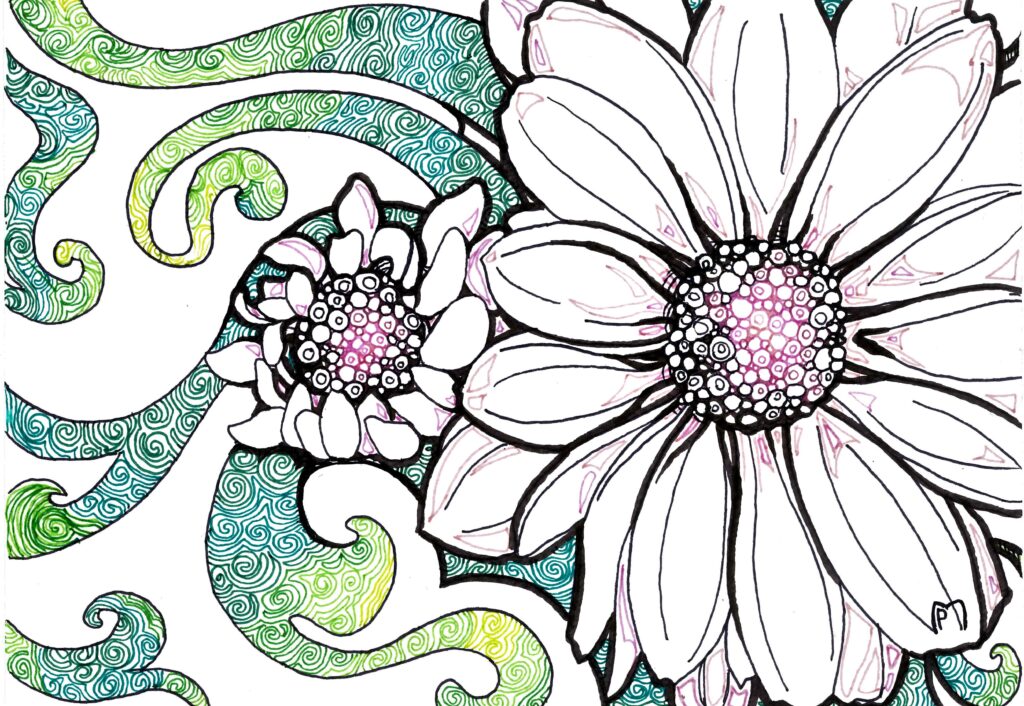
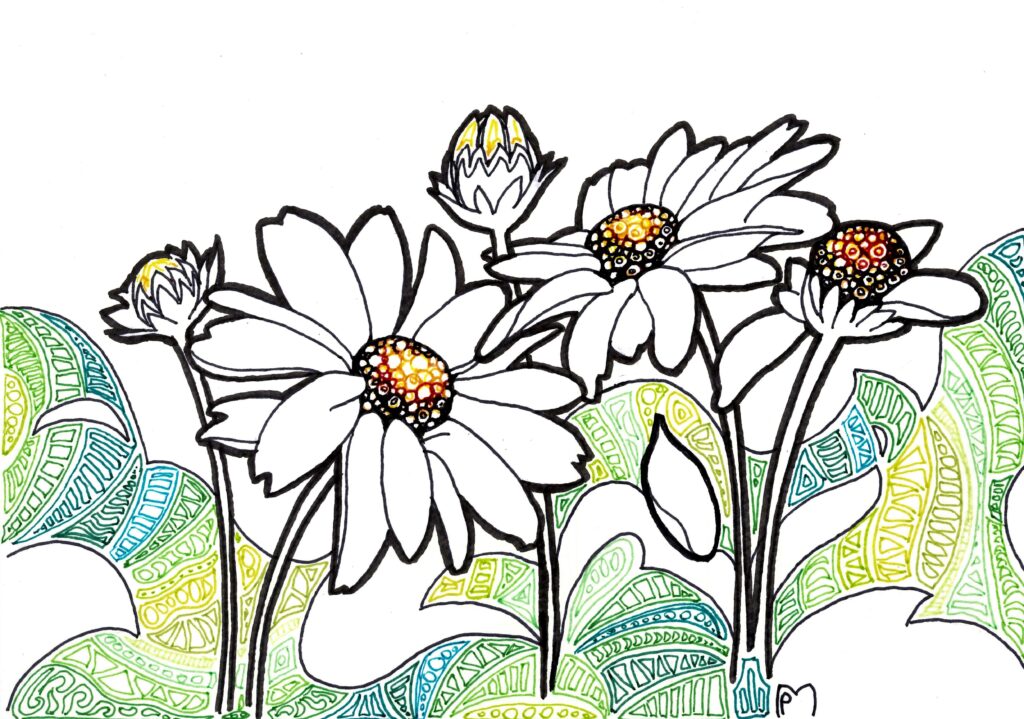
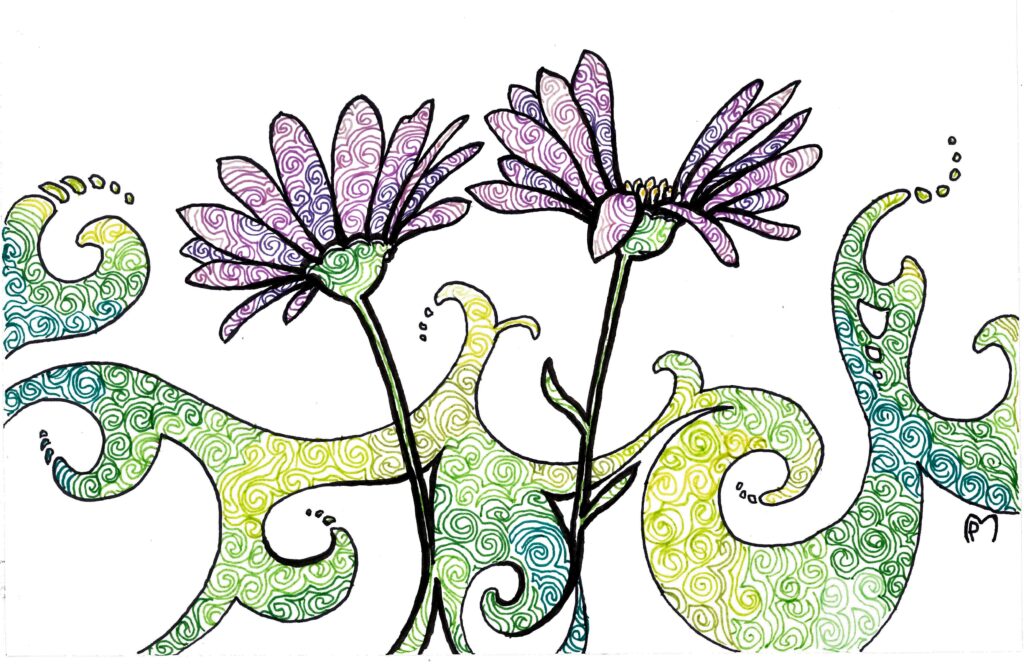
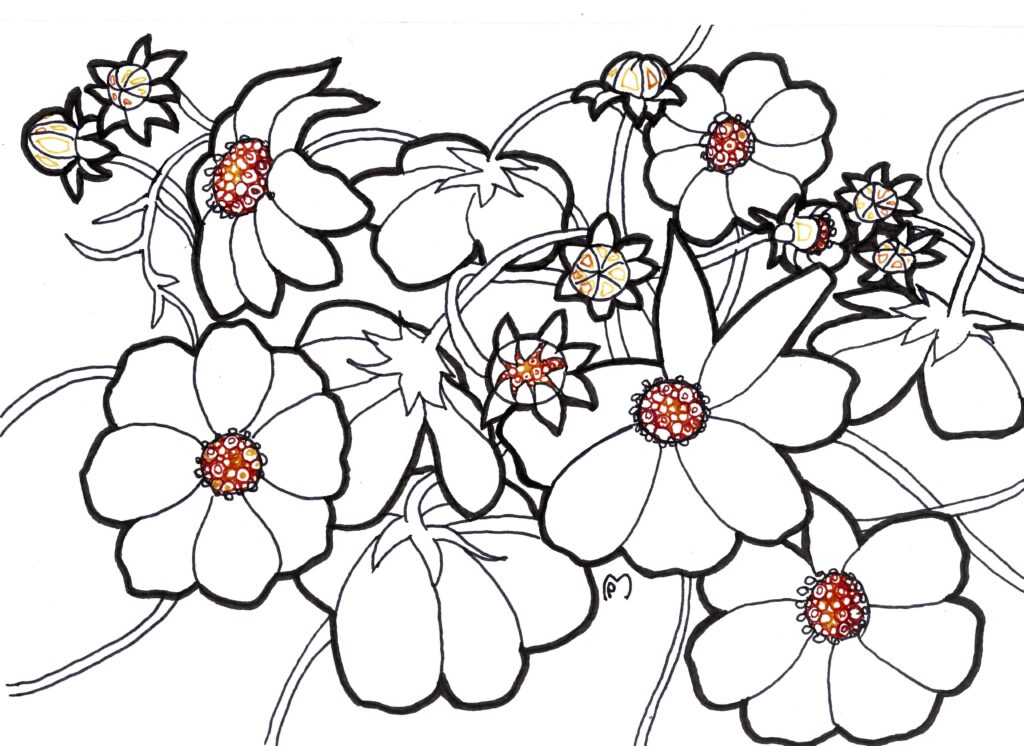
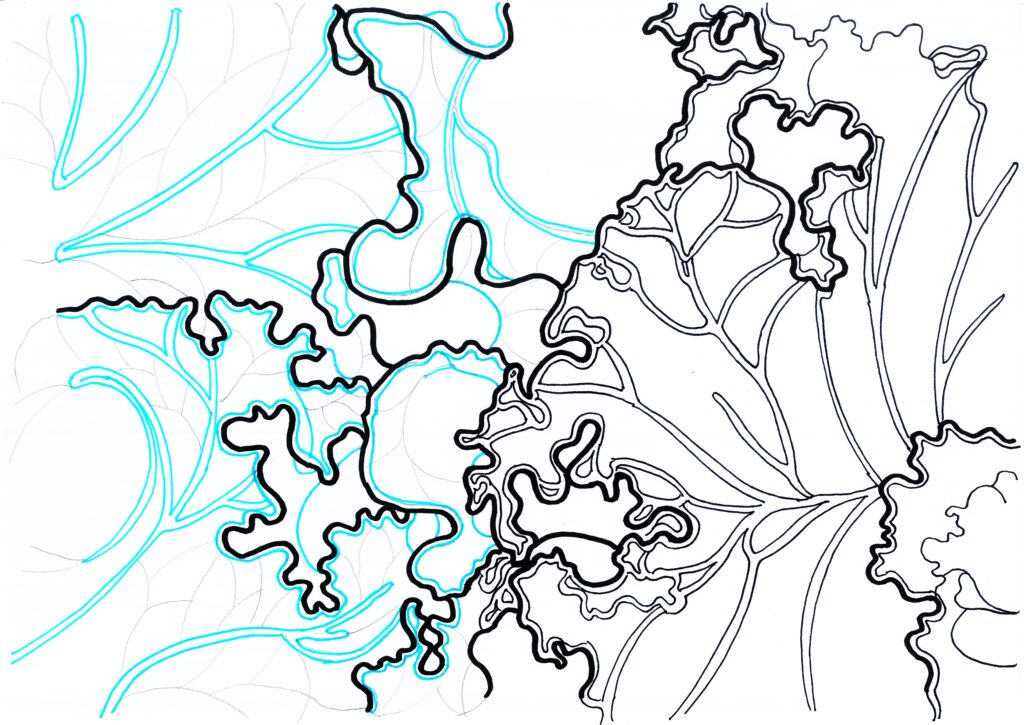
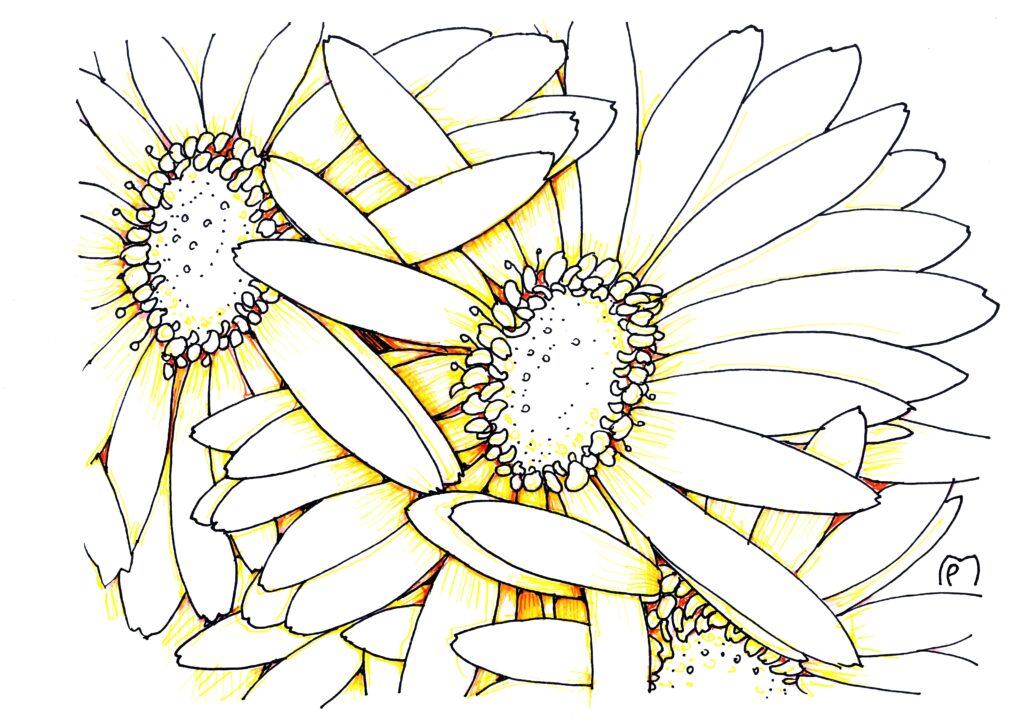
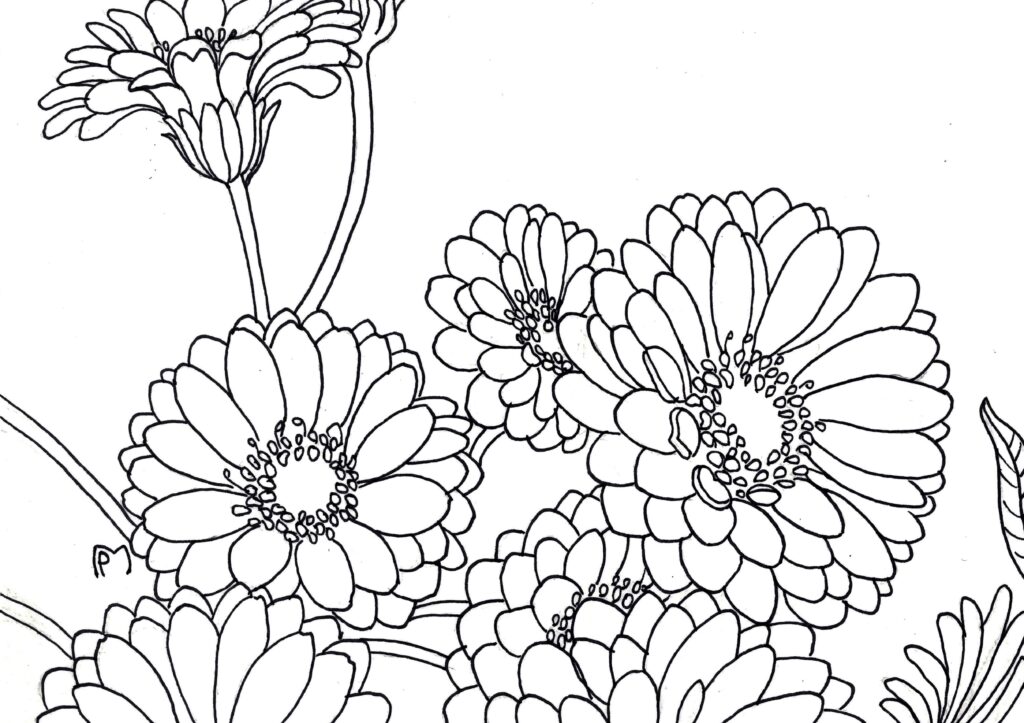
My future steps in drawing aim to go beyond the abstraction by subtraction. I will continue with addition and composition: this is a method that I’ve used during improv quilting, when I practiced adding fabric pieces on the design wall. I love seeing how different media influence your brain in training you on some practices which can be transferred to other media.
Here below it is shown one of my most recent botanical drawing: this is started from tens of separate flower and petal drawings (ink on paper), recombined, drawing them again and again, choosing the final composition with pencil and eraser. The result is re united in an imaginary organic creation.

The logo of the Instagram profile @the_cult_of_ink was made in this same way: selecting petal shapes and repeating them. Here below you can see the source (photographic details) and the resulting final drawing. Question to the quilting friends: does it look like connecting pieces of fabric?
